Quick filters:
Mucoraceae Stock Photos and Images
 The sausage has deteriorated from a long stay in the refrigerator and is covered with mold (mucor, Mucoraceae) Stock Photohttps://www.alamy.com/image-license-details/?v=1https://www.alamy.com/the-sausage-has-deteriorated-from-a-long-stay-in-the-refrigerator-and-is-covered-with-mold-mucor-mucoraceae-image435784229.html
The sausage has deteriorated from a long stay in the refrigerator and is covered with mold (mucor, Mucoraceae) Stock Photohttps://www.alamy.com/image-license-details/?v=1https://www.alamy.com/the-sausage-has-deteriorated-from-a-long-stay-in-the-refrigerator-and-is-covered-with-mold-mucor-mucoraceae-image435784229.htmlRF2G8YK6D–The sausage has deteriorated from a long stay in the refrigerator and is covered with mold (mucor, Mucoraceae)
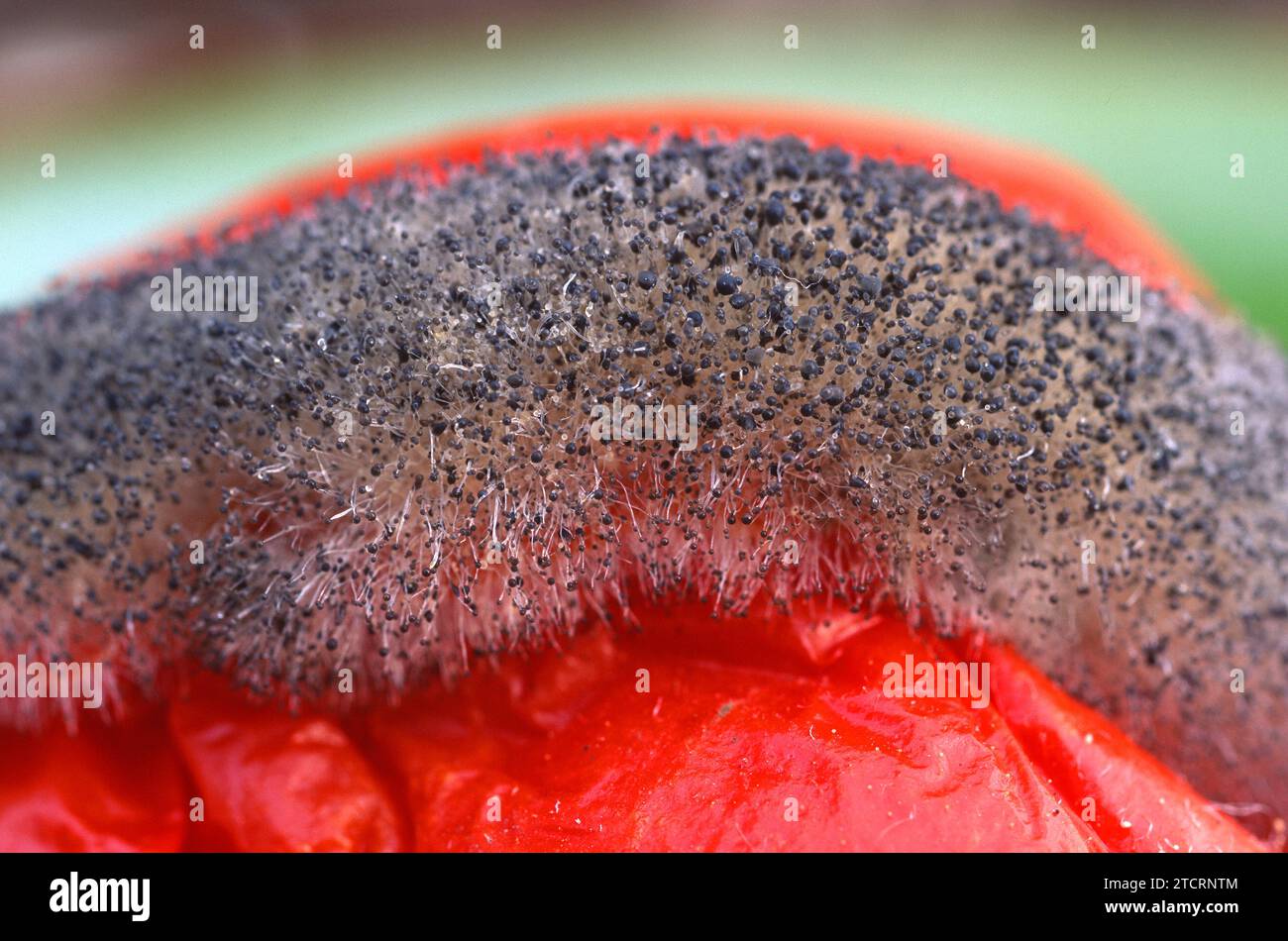 Rhizopus stolonifer or Rhizopus nigricans colonizing a tomatoe. Stock Photohttps://www.alamy.com/image-license-details/?v=1https://www.alamy.com/rhizopus-stolonifer-or-rhizopus-nigricans-colonizing-a-tomatoe-image575840068.html
Rhizopus stolonifer or Rhizopus nigricans colonizing a tomatoe. Stock Photohttps://www.alamy.com/image-license-details/?v=1https://www.alamy.com/rhizopus-stolonifer-or-rhizopus-nigricans-colonizing-a-tomatoe-image575840068.htmlRF2TCRNTM–Rhizopus stolonifer or Rhizopus nigricans colonizing a tomatoe.
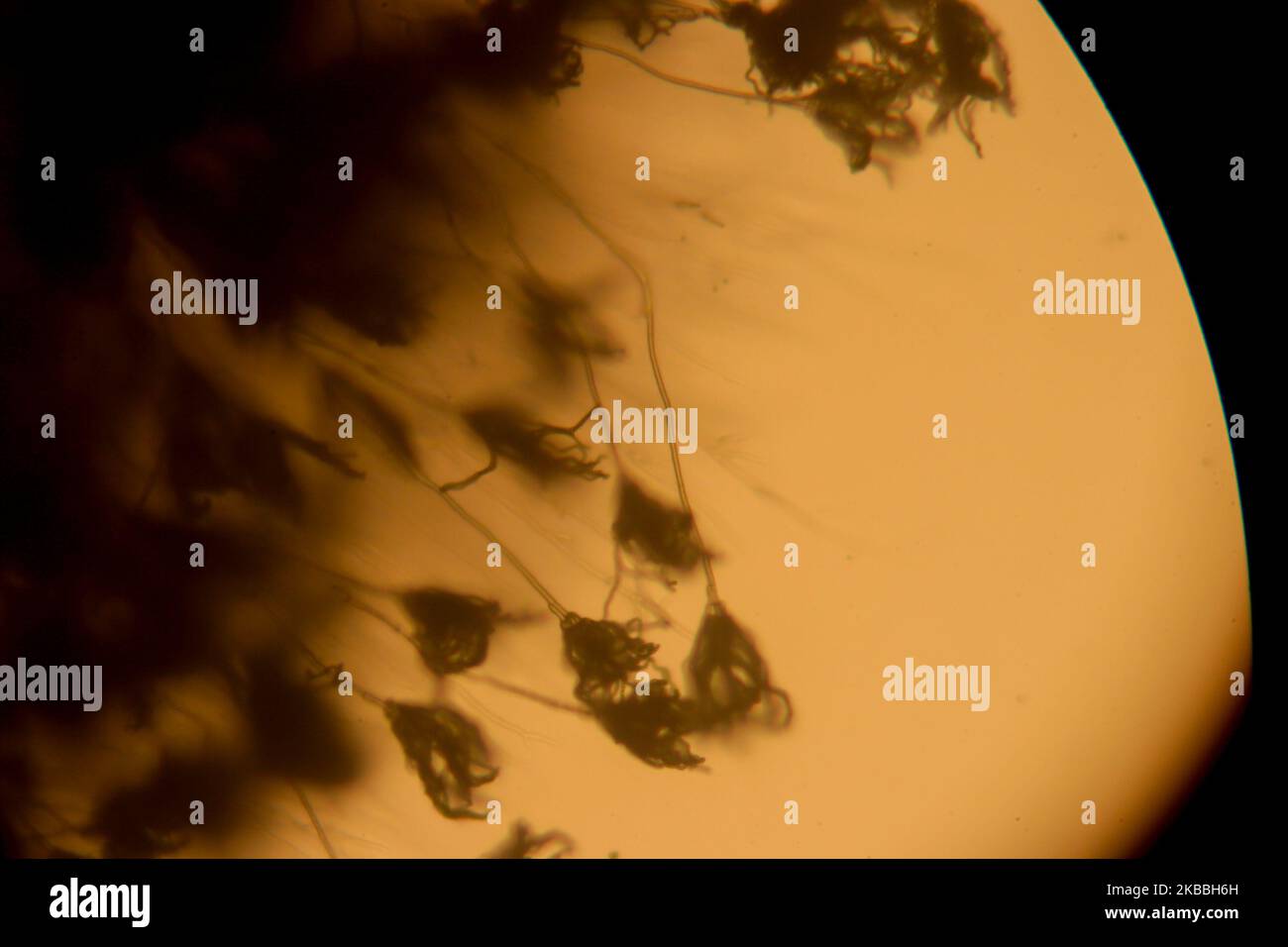 Rhizopus fungi specimen as seen through a microscope Stock Photohttps://www.alamy.com/image-license-details/?v=1https://www.alamy.com/rhizopus-fungi-specimen-as-seen-through-a-microscope-image488906505.html
Rhizopus fungi specimen as seen through a microscope Stock Photohttps://www.alamy.com/image-license-details/?v=1https://www.alamy.com/rhizopus-fungi-specimen-as-seen-through-a-microscope-image488906505.htmlRF2KBBH6H–Rhizopus fungi specimen as seen through a microscope
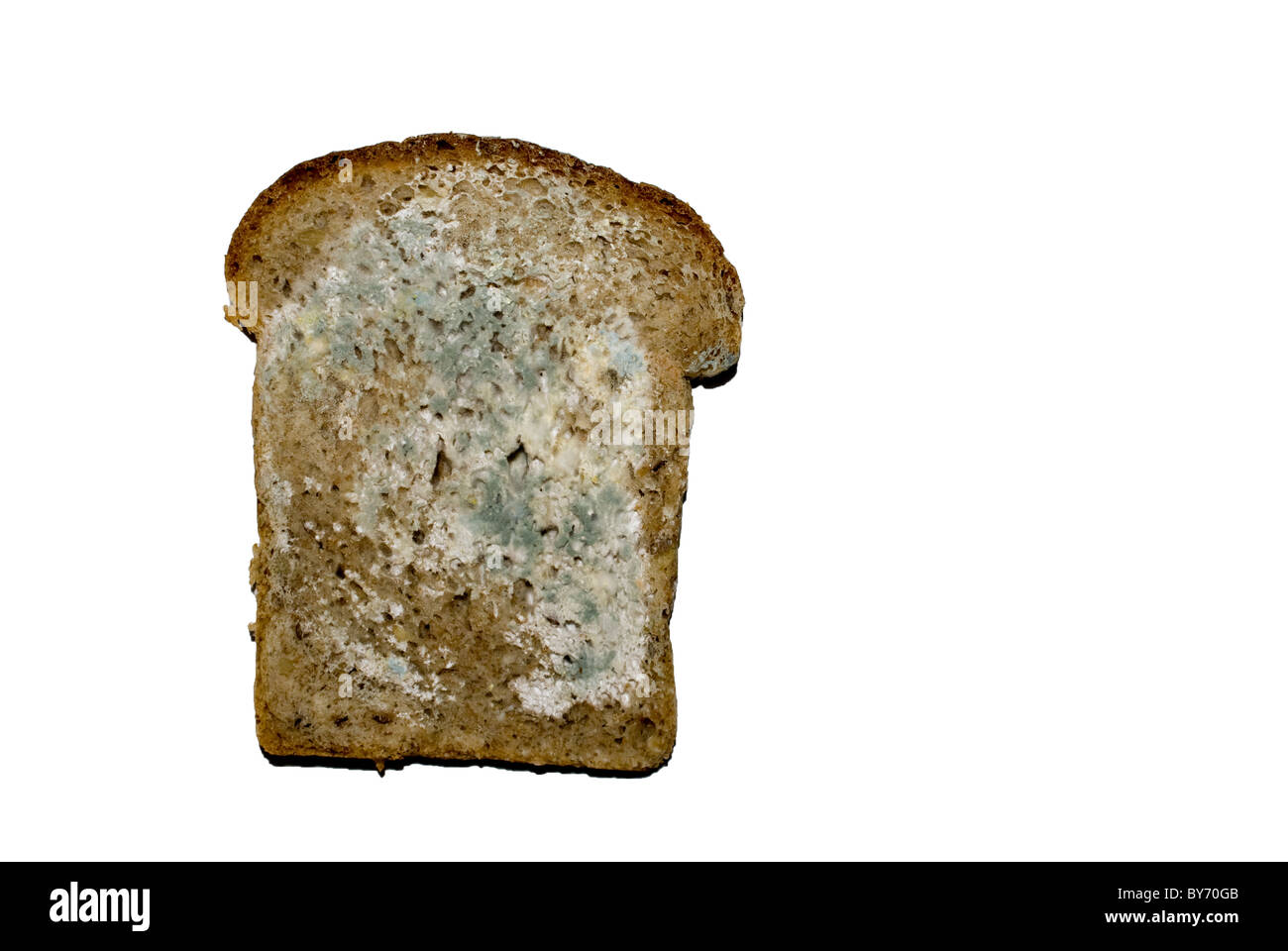 Isolated on white moulded slice of wholemeal bread. Stock Photohttps://www.alamy.com/image-license-details/?v=1https://www.alamy.com/stock-photo-isolated-on-white-moulded-slice-of-wholemeal-bread-33960203.html
Isolated on white moulded slice of wholemeal bread. Stock Photohttps://www.alamy.com/image-license-details/?v=1https://www.alamy.com/stock-photo-isolated-on-white-moulded-slice-of-wholemeal-bread-33960203.htmlRFBY70GB–Isolated on white moulded slice of wholemeal bread.
 Prof. Dr. Thomé's Flora von Deutschland, Österreich und der Schweiz, in Wort und Bild, für Schule und Haus, mit Tafeln von Walter Müller. Gera-Untermhaus, F.E. Koehler, 1886-1934, Austria, Botany, Cryptogamia, Cryptogams, Floras, Germany, Plants, Switzerland, Fungi., The illustration showcases various forms of fungi from the Mucoraceae family. Central to the composition are intricate structures resembling sporangium heads, characterized by their rounded, dotted appearances atop slender stalks. Surrounding these are additional fungal elements, including branching filaments and root-like str Stock Photohttps://www.alamy.com/image-license-details/?v=1https://www.alamy.com/prof-dr-thomes-flora-von-deutschland-osterreich-und-der-schweiz-in-wort-und-bild-fur-schule-und-haus-mit-tafeln-von-walter-muller-gera-untermhaus-fe-koehler-1886-1934-austria-botany-cryptogamia-cryptogams-floras-germany-plants-switzerland-fungi-the-illustration-showcases-various-forms-of-fungi-from-the-mucoraceae-family-central-to-the-composition-are-intricate-structures-resembling-sporangium-heads-characterized-by-their-rounded-dotted-appearances-atop-slender-stalks-surrounding-these-are-additional-fungal-elements-including-branching-filaments-and-root-like-str-image636090713.html
Prof. Dr. Thomé's Flora von Deutschland, Österreich und der Schweiz, in Wort und Bild, für Schule und Haus, mit Tafeln von Walter Müller. Gera-Untermhaus, F.E. Koehler, 1886-1934, Austria, Botany, Cryptogamia, Cryptogams, Floras, Germany, Plants, Switzerland, Fungi., The illustration showcases various forms of fungi from the Mucoraceae family. Central to the composition are intricate structures resembling sporangium heads, characterized by their rounded, dotted appearances atop slender stalks. Surrounding these are additional fungal elements, including branching filaments and root-like str Stock Photohttps://www.alamy.com/image-license-details/?v=1https://www.alamy.com/prof-dr-thomes-flora-von-deutschland-osterreich-und-der-schweiz-in-wort-und-bild-fur-schule-und-haus-mit-tafeln-von-walter-muller-gera-untermhaus-fe-koehler-1886-1934-austria-botany-cryptogamia-cryptogams-floras-germany-plants-switzerland-fungi-the-illustration-showcases-various-forms-of-fungi-from-the-mucoraceae-family-central-to-the-composition-are-intricate-structures-resembling-sporangium-heads-characterized-by-their-rounded-dotted-appearances-atop-slender-stalks-surrounding-these-are-additional-fungal-elements-including-branching-filaments-and-root-like-str-image636090713.htmlRM2YXTC5D–Prof. Dr. Thomé's Flora von Deutschland, Österreich und der Schweiz, in Wort und Bild, für Schule und Haus, mit Tafeln von Walter Müller. Gera-Untermhaus, F.E. Koehler, 1886-1934, Austria, Botany, Cryptogamia, Cryptogams, Floras, Germany, Plants, Switzerland, Fungi., The illustration showcases various forms of fungi from the Mucoraceae family. Central to the composition are intricate structures resembling sporangium heads, characterized by their rounded, dotted appearances atop slender stalks. Surrounding these are additional fungal elements, including branching filaments and root-like str
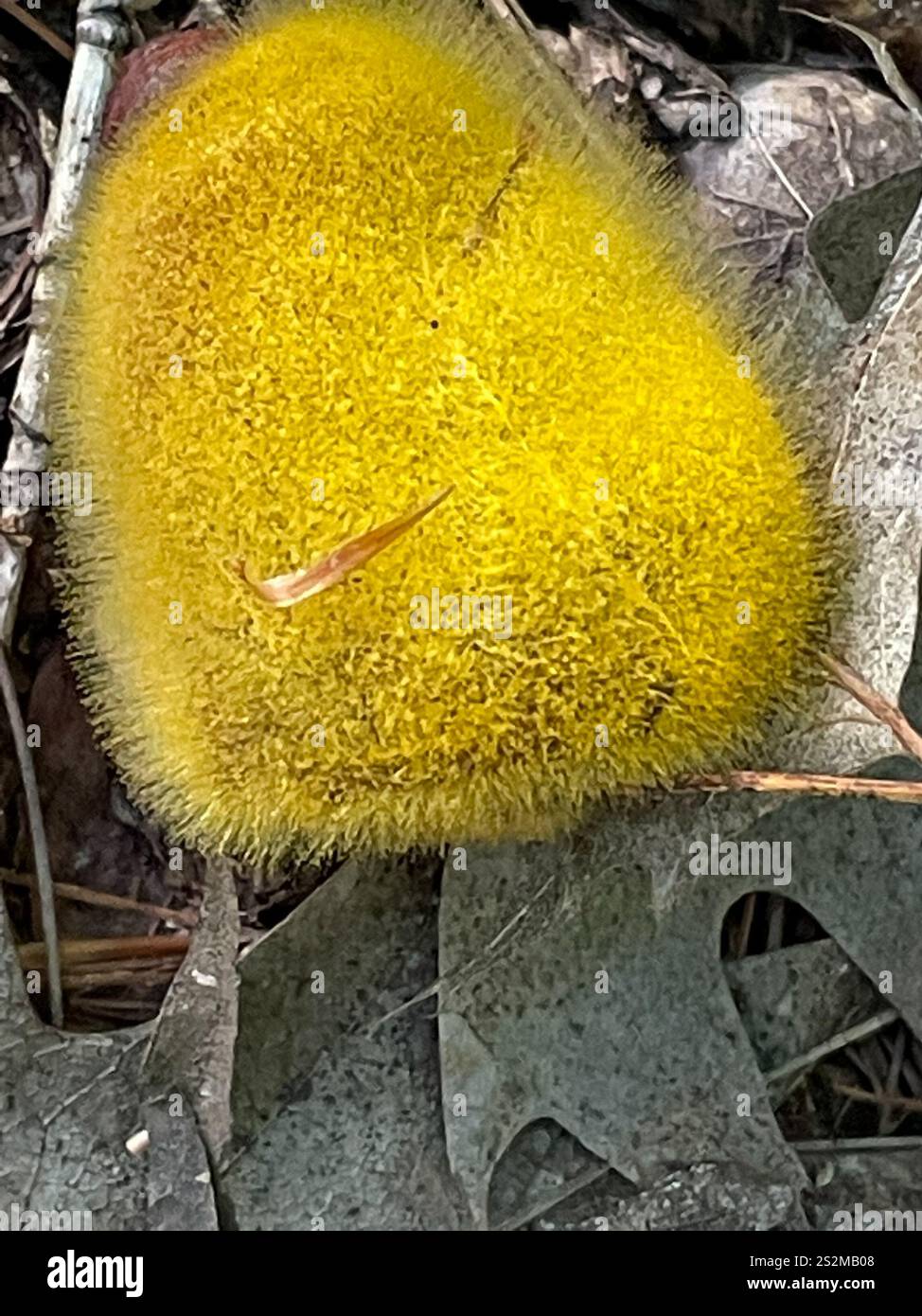 (Mucoraceae) Stock Photohttps://www.alamy.com/image-license-details/?v=1https://www.alamy.com/mucoraceae-image638460600.html
(Mucoraceae) Stock Photohttps://www.alamy.com/image-license-details/?v=1https://www.alamy.com/mucoraceae-image638460600.htmlRM2S2MB08–(Mucoraceae)
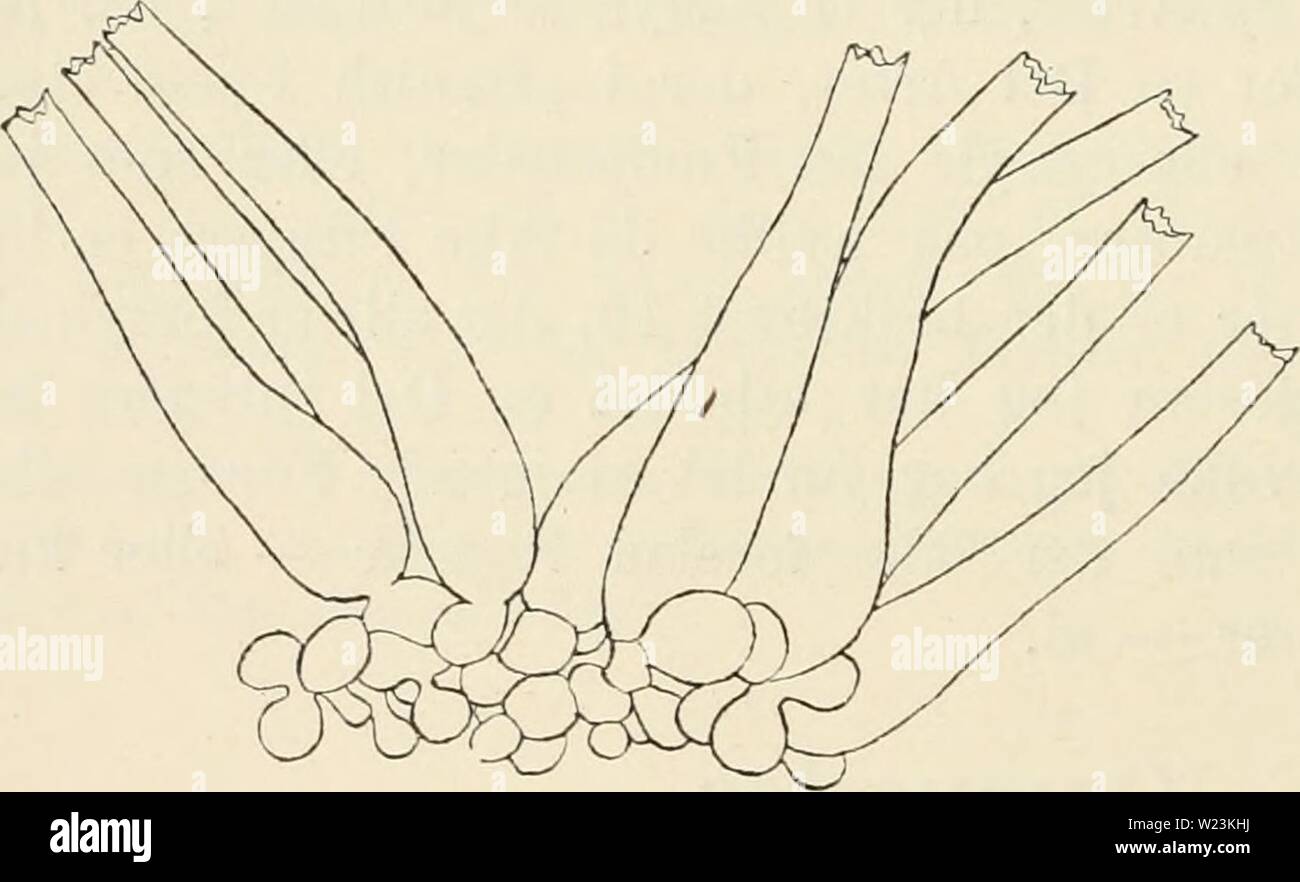 Archive image from page 171 of Dansk botanisk arkiv (1913-1981). Dansk botanisk arkiv danskbotaniskark02dans Year: 1913-1981 Dansk Botanisk Arkiv, Bd. 2. Nr. 5. Zygomycetes. Mucoraceae. Mucor problems Schostakow. Paa Hestegødning. S. Gelsskov 1915. ♦Mucor plasmaticus v. Tiegh. Paa Hestegødning. S. Kirkelte Hegn, Okt. 1915. Absidia glauca Hagem. I Jorden. Møen: Borre 1913. Absidia orchidis (Vuill.) Hagem. I Jorden. Møen: Borre. Pilobolus Kleinii v. Tiegh. Paa Hestegødning. København. Mortierellaceae. Mortierella candelabrum v. Tiegh. et le Monn. Paa Polyporus adustus. S. Jægersborg Dyrehave. Stock Photohttps://www.alamy.com/image-license-details/?v=1https://www.alamy.com/archive-image-from-page-171-of-dansk-botanisk-arkiv-1913-1981-dansk-botanisk-arkiv-danskbotaniskark02dans-year-1913-1981-dansk-botanisk-arkiv-bd-2-nr-5-zygomycetes-mucoraceae-mucor-problems-schostakow-paa-hestegdning-s-gelsskov-1915-mucor-plasmaticus-v-tiegh-paa-hestegdning-s-kirkelte-hegn-okt-1915-absidia-glauca-hagem-i-jorden-men-borre-1913-absidia-orchidis-vuill-hagem-i-jorden-men-borre-pilobolus-kleinii-v-tiegh-paa-hestegdning-kbenhavn-mortierellaceae-mortierella-candelabrum-v-tiegh-et-le-monn-paa-polyporus-adustus-s-jgersborg-dyrehave-image259466078.html
Archive image from page 171 of Dansk botanisk arkiv (1913-1981). Dansk botanisk arkiv danskbotaniskark02dans Year: 1913-1981 Dansk Botanisk Arkiv, Bd. 2. Nr. 5. Zygomycetes. Mucoraceae. Mucor problems Schostakow. Paa Hestegødning. S. Gelsskov 1915. ♦Mucor plasmaticus v. Tiegh. Paa Hestegødning. S. Kirkelte Hegn, Okt. 1915. Absidia glauca Hagem. I Jorden. Møen: Borre 1913. Absidia orchidis (Vuill.) Hagem. I Jorden. Møen: Borre. Pilobolus Kleinii v. Tiegh. Paa Hestegødning. København. Mortierellaceae. Mortierella candelabrum v. Tiegh. et le Monn. Paa Polyporus adustus. S. Jægersborg Dyrehave. Stock Photohttps://www.alamy.com/image-license-details/?v=1https://www.alamy.com/archive-image-from-page-171-of-dansk-botanisk-arkiv-1913-1981-dansk-botanisk-arkiv-danskbotaniskark02dans-year-1913-1981-dansk-botanisk-arkiv-bd-2-nr-5-zygomycetes-mucoraceae-mucor-problems-schostakow-paa-hestegdning-s-gelsskov-1915-mucor-plasmaticus-v-tiegh-paa-hestegdning-s-kirkelte-hegn-okt-1915-absidia-glauca-hagem-i-jorden-men-borre-1913-absidia-orchidis-vuill-hagem-i-jorden-men-borre-pilobolus-kleinii-v-tiegh-paa-hestegdning-kbenhavn-mortierellaceae-mortierella-candelabrum-v-tiegh-et-le-monn-paa-polyporus-adustus-s-jgersborg-dyrehave-image259466078.htmlRMW23KHJ–Archive image from page 171 of Dansk botanisk arkiv (1913-1981). Dansk botanisk arkiv danskbotaniskark02dans Year: 1913-1981 Dansk Botanisk Arkiv, Bd. 2. Nr. 5. Zygomycetes. Mucoraceae. Mucor problems Schostakow. Paa Hestegødning. S. Gelsskov 1915. ♦Mucor plasmaticus v. Tiegh. Paa Hestegødning. S. Kirkelte Hegn, Okt. 1915. Absidia glauca Hagem. I Jorden. Møen: Borre 1913. Absidia orchidis (Vuill.) Hagem. I Jorden. Møen: Borre. Pilobolus Kleinii v. Tiegh. Paa Hestegødning. København. Mortierellaceae. Mortierella candelabrum v. Tiegh. et le Monn. Paa Polyporus adustus. S. Jægersborg Dyrehave.
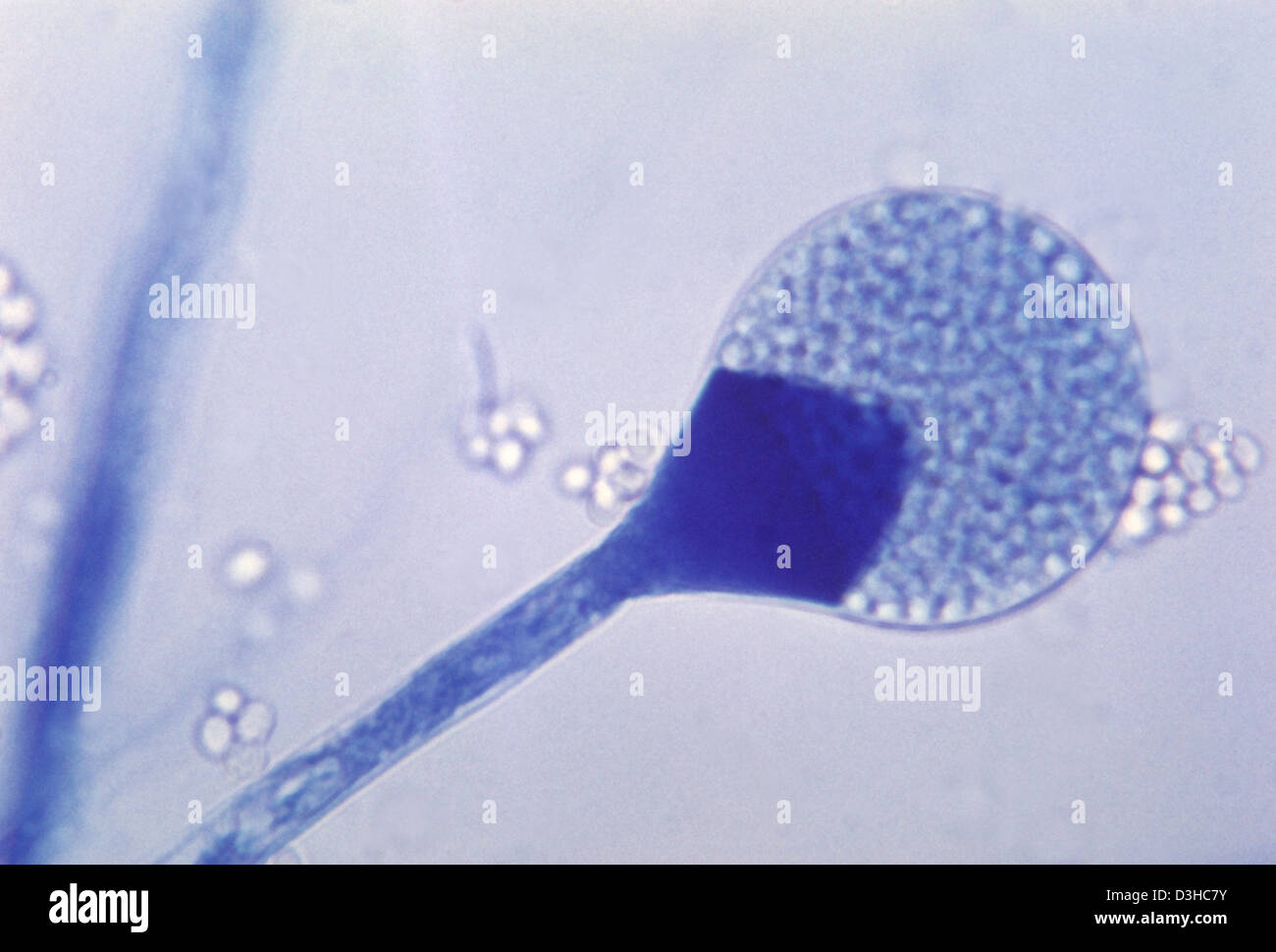 ZYGOMYCETE Stock Photohttps://www.alamy.com/image-license-details/?v=1https://www.alamy.com/stock-photo-zygomycete-53857887.html
ZYGOMYCETE Stock Photohttps://www.alamy.com/image-license-details/?v=1https://www.alamy.com/stock-photo-zygomycete-53857887.htmlRMD3HC7Y–ZYGOMYCETE
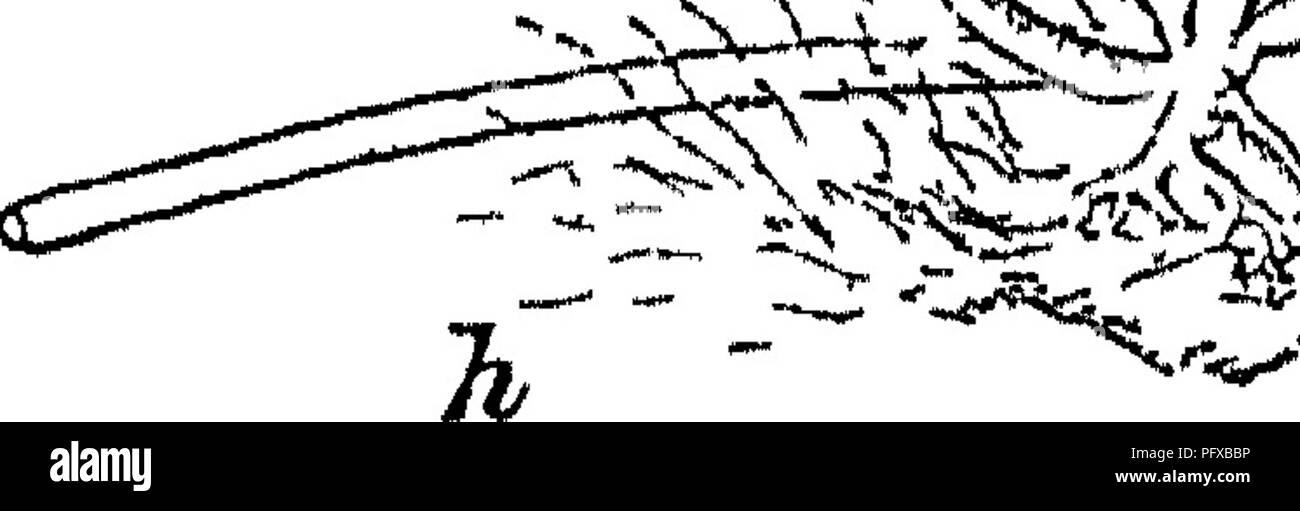 . Bacteriology and mycology of foods. Food. n. ..jff^fS. ^pj-w Fig. 47 —Rhizopus nigricans Ehrenberg (After Brefeld ) (a) is the extremity of a stolon, which has developed into the appressonum {h) This latter is the starting point of the sporangiophores (t) four of which are shown with the sporangia (&) unbroken, whilst the columella («) is all that remains of the fifth Magn 30 identification of molds. The mucoraceae do not possess these cross walls ordinarily. Fructib&cation. This takes place on the fertile hyphse which bear the fruiting bodies. Enormous numbers of spores are formed e Stock Photohttps://www.alamy.com/image-license-details/?v=1https://www.alamy.com/bacteriology-and-mycology-of-foods-food-n-jfffs-pj-w-fig-47-rhizopus-nigricans-ehrenberg-after-brefeld-a-is-the-extremity-of-a-stolon-which-has-developed-into-the-appressonum-h-this-latter-is-the-starting-point-of-the-sporangiophores-t-four-of-which-are-shown-with-the-sporangia-amp-unbroken-whilst-the-columella-is-all-that-remains-of-the-fifth-magn-30-identification-of-molds-the-mucoraceae-do-not-possess-these-cross-walls-ordinarily-fructibampcation-this-takes-place-on-the-fertile-hyphse-which-bear-the-fruiting-bodies-enormous-numbers-of-spores-are-formed-e-image216323962.html
. Bacteriology and mycology of foods. Food. n. ..jff^fS. ^pj-w Fig. 47 —Rhizopus nigricans Ehrenberg (After Brefeld ) (a) is the extremity of a stolon, which has developed into the appressonum {h) This latter is the starting point of the sporangiophores (t) four of which are shown with the sporangia (&) unbroken, whilst the columella («) is all that remains of the fifth Magn 30 identification of molds. The mucoraceae do not possess these cross walls ordinarily. Fructib&cation. This takes place on the fertile hyphse which bear the fruiting bodies. Enormous numbers of spores are formed e Stock Photohttps://www.alamy.com/image-license-details/?v=1https://www.alamy.com/bacteriology-and-mycology-of-foods-food-n-jfffs-pj-w-fig-47-rhizopus-nigricans-ehrenberg-after-brefeld-a-is-the-extremity-of-a-stolon-which-has-developed-into-the-appressonum-h-this-latter-is-the-starting-point-of-the-sporangiophores-t-four-of-which-are-shown-with-the-sporangia-amp-unbroken-whilst-the-columella-is-all-that-remains-of-the-fifth-magn-30-identification-of-molds-the-mucoraceae-do-not-possess-these-cross-walls-ordinarily-fructibampcation-this-takes-place-on-the-fertile-hyphse-which-bear-the-fruiting-bodies-enormous-numbers-of-spores-are-formed-e-image216323962.htmlRMPFXBBP–. Bacteriology and mycology of foods. Food. n. ..jff^fS. ^pj-w Fig. 47 —Rhizopus nigricans Ehrenberg (After Brefeld ) (a) is the extremity of a stolon, which has developed into the appressonum {h) This latter is the starting point of the sporangiophores (t) four of which are shown with the sporangia (&) unbroken, whilst the columella («) is all that remains of the fifth Magn 30 identification of molds. The mucoraceae do not possess these cross walls ordinarily. Fructib&cation. This takes place on the fertile hyphse which bear the fruiting bodies. Enormous numbers of spores are formed e
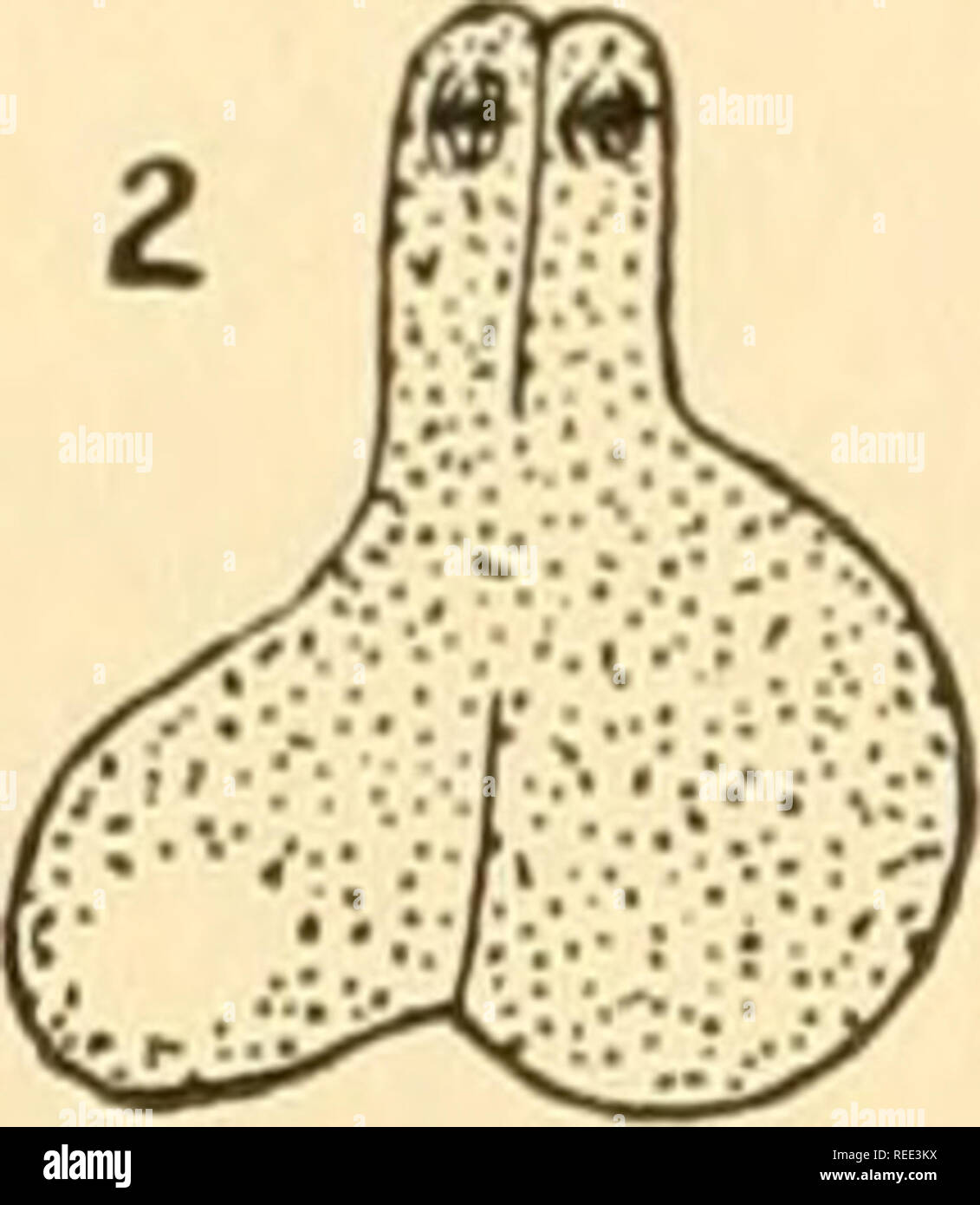 . Comparative morphology of Fungi. Fungi. 120 COMPARATIVE MORPHOLOGY OF FUNGI germinate with a germ tube (Fig. 72, 4) which may develop to a myce- lium or sporangiophore. Entomophthoreae.—In this tribe the sporangia have become conidia, as in the higher Mucoraceae. Conidiobolus utriculosus, parasitic on Tremellaceae, may be cultivated on artificial media (Brefeld, 1884). Its. Please note that these images are extracted from scanned page images that may have been digitally enhanced for readability - coloration and appearance of these illustrations may not perfectly resemble the original work.. Stock Photohttps://www.alamy.com/image-license-details/?v=1https://www.alamy.com/comparative-morphology-of-fungi-fungi-120-comparative-morphology-of-fungi-germinate-with-a-germ-tube-fig-72-4-which-may-develop-to-a-myce-lium-or-sporangiophore-entomophthoreaein-this-tribe-the-sporangia-have-become-conidia-as-in-the-higher-mucoraceae-conidiobolus-utriculosus-parasitic-on-tremellaceae-may-be-cultivated-on-artificial-media-brefeld-1884-its-please-note-that-these-images-are-extracted-from-scanned-page-images-that-may-have-been-digitally-enhanced-for-readability-coloration-and-appearance-of-these-illustrations-may-not-perfectly-resemble-the-original-work-image232650206.html
. Comparative morphology of Fungi. Fungi. 120 COMPARATIVE MORPHOLOGY OF FUNGI germinate with a germ tube (Fig. 72, 4) which may develop to a myce- lium or sporangiophore. Entomophthoreae.—In this tribe the sporangia have become conidia, as in the higher Mucoraceae. Conidiobolus utriculosus, parasitic on Tremellaceae, may be cultivated on artificial media (Brefeld, 1884). Its. Please note that these images are extracted from scanned page images that may have been digitally enhanced for readability - coloration and appearance of these illustrations may not perfectly resemble the original work.. Stock Photohttps://www.alamy.com/image-license-details/?v=1https://www.alamy.com/comparative-morphology-of-fungi-fungi-120-comparative-morphology-of-fungi-germinate-with-a-germ-tube-fig-72-4-which-may-develop-to-a-myce-lium-or-sporangiophore-entomophthoreaein-this-tribe-the-sporangia-have-become-conidia-as-in-the-higher-mucoraceae-conidiobolus-utriculosus-parasitic-on-tremellaceae-may-be-cultivated-on-artificial-media-brefeld-1884-its-please-note-that-these-images-are-extracted-from-scanned-page-images-that-may-have-been-digitally-enhanced-for-readability-coloration-and-appearance-of-these-illustrations-may-not-perfectly-resemble-the-original-work-image232650206.htmlRMREE3KX–. Comparative morphology of Fungi. Fungi. 120 COMPARATIVE MORPHOLOGY OF FUNGI germinate with a germ tube (Fig. 72, 4) which may develop to a myce- lium or sporangiophore. Entomophthoreae.—In this tribe the sporangia have become conidia, as in the higher Mucoraceae. Conidiobolus utriculosus, parasitic on Tremellaceae, may be cultivated on artificial media (Brefeld, 1884). Its. Please note that these images are extracted from scanned page images that may have been digitally enhanced for readability - coloration and appearance of these illustrations may not perfectly resemble the original work..
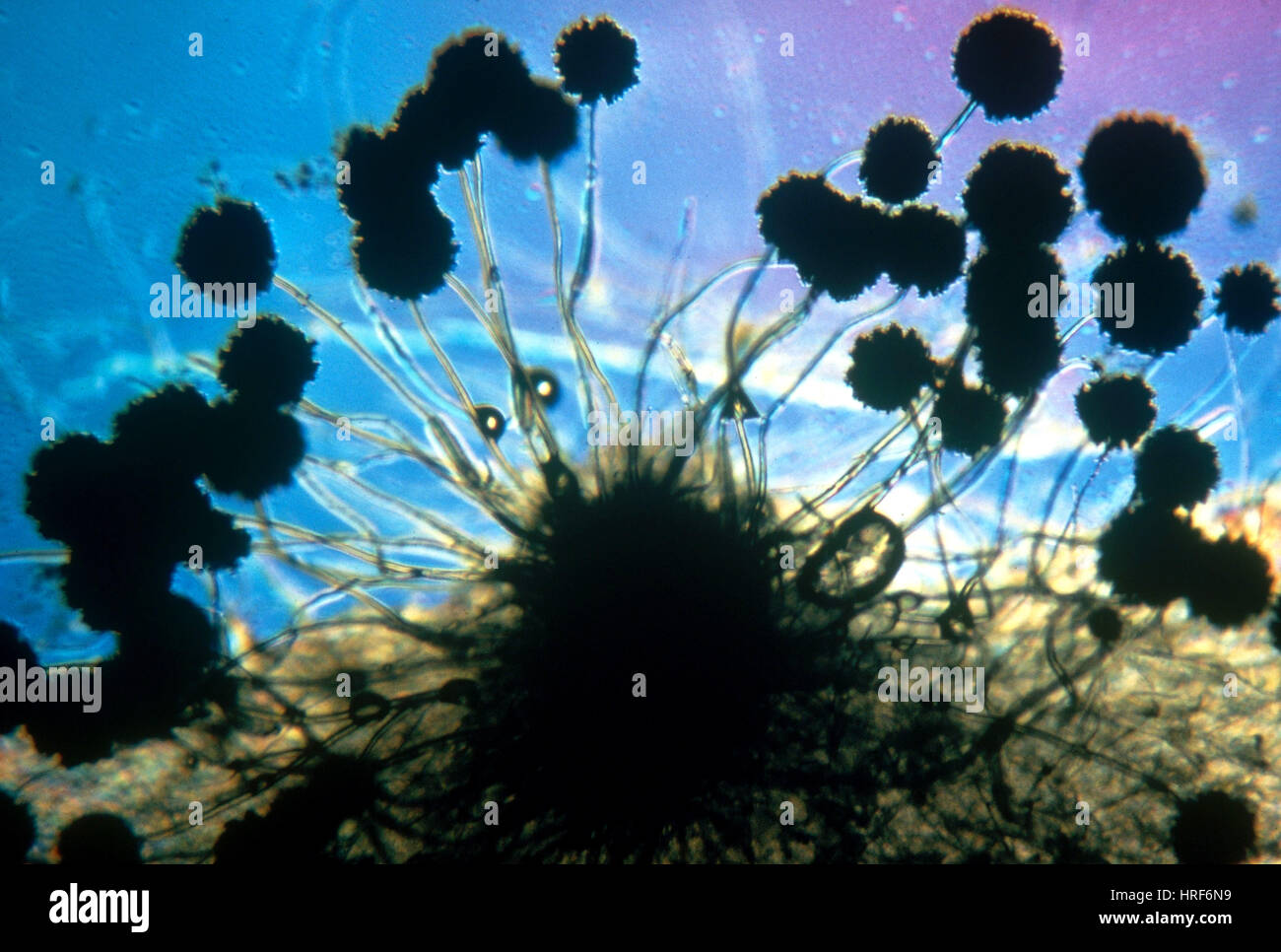 Black Bread Mold Stock Photohttps://www.alamy.com/image-license-details/?v=1https://www.alamy.com/stock-photo-black-bread-mold-134944245.html
Black Bread Mold Stock Photohttps://www.alamy.com/image-license-details/?v=1https://www.alamy.com/stock-photo-black-bread-mold-134944245.htmlRMHRF6N9–Black Bread Mold
 The sausage has deteriorated from a long stay in the refrigerator and is covered with mold (mucor, Mucoraceae) Stock Photohttps://www.alamy.com/image-license-details/?v=1https://www.alamy.com/the-sausage-has-deteriorated-from-a-long-stay-in-the-refrigerator-and-is-covered-with-mold-mucor-mucoraceae-image442127526.html
The sausage has deteriorated from a long stay in the refrigerator and is covered with mold (mucor, Mucoraceae) Stock Photohttps://www.alamy.com/image-license-details/?v=1https://www.alamy.com/the-sausage-has-deteriorated-from-a-long-stay-in-the-refrigerator-and-is-covered-with-mold-mucor-mucoraceae-image442127526.htmlRF2GK8J4P–The sausage has deteriorated from a long stay in the refrigerator and is covered with mold (mucor, Mucoraceae)
 Rhizopus stolonifer or Rhizopus nigricans colonizing bread. Stock Photohttps://www.alamy.com/image-license-details/?v=1https://www.alamy.com/rhizopus-stolonifer-or-rhizopus-nigricans-colonizing-bread-image575840094.html
Rhizopus stolonifer or Rhizopus nigricans colonizing bread. Stock Photohttps://www.alamy.com/image-license-details/?v=1https://www.alamy.com/rhizopus-stolonifer-or-rhizopus-nigricans-colonizing-bread-image575840094.htmlRF2TCRNWJ–Rhizopus stolonifer or Rhizopus nigricans colonizing bread.
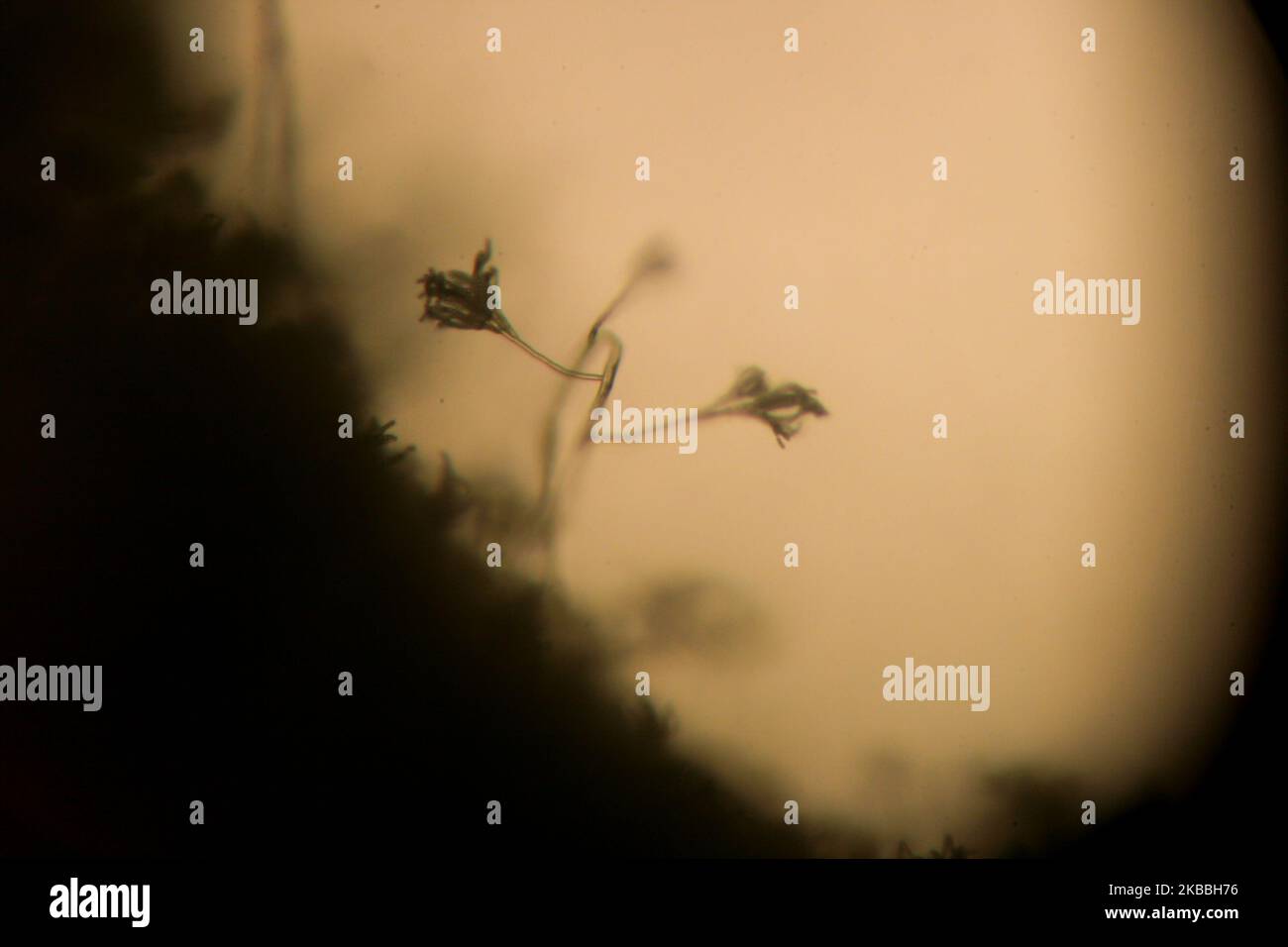 Rhizopus fungi specimen as seen through a microscope Stock Photohttps://www.alamy.com/image-license-details/?v=1https://www.alamy.com/rhizopus-fungi-specimen-as-seen-through-a-microscope-image488906522.html
Rhizopus fungi specimen as seen through a microscope Stock Photohttps://www.alamy.com/image-license-details/?v=1https://www.alamy.com/rhizopus-fungi-specimen-as-seen-through-a-microscope-image488906522.htmlRF2KBBH76–Rhizopus fungi specimen as seen through a microscope
 Negative black mold on cheese. Ultra Macro Stock Photohttps://www.alamy.com/image-license-details/?v=1https://www.alamy.com/negative-black-mold-on-cheese-ultra-macro-image481565036.html
Negative black mold on cheese. Ultra Macro Stock Photohttps://www.alamy.com/image-license-details/?v=1https://www.alamy.com/negative-black-mold-on-cheese-ultra-macro-image481565036.htmlRM2JYD538–Negative black mold on cheese. Ultra Macro
 Prof. Dr. Thomé's Flora von Deutschland, Österreich und der Schweiz, in Wort und Bild, für Schule und Haus, mit Tafeln von Walter Müller. Gera-Untermhaus, F.E. Khler, 1886-1934. Austria, Botany, Cryptogamia, Cryptogams, Floras, Germany, Plants, Switzerland, Fungi, This illustration features detailed botanical studies of the Mucoraceae family, showcasing different morphological structures. At the top, slender filaments extend upward, branching outwards like delicate trees. Each filament culminates in a rounded structure, which appears to represent a reproductive organ. Below, a more compact Stock Photohttps://www.alamy.com/image-license-details/?v=1https://www.alamy.com/prof-dr-thomes-flora-von-deutschland-osterreich-und-der-schweiz-in-wort-und-bild-fur-schule-und-haus-mit-tafeln-von-walter-muller-gera-untermhaus-fe-khler-1886-1934-austria-botany-cryptogamia-cryptogams-floras-germany-plants-switzerland-fungi-this-illustration-features-detailed-botanical-studies-of-the-mucoraceae-family-showcasing-different-morphological-structures-at-the-top-slender-filaments-extend-upward-branching-outwards-like-delicate-trees-each-filament-culminates-in-a-rounded-structure-which-appears-to-represent-a-reproductive-organ-below-a-more-compact-image636083927.html
Prof. Dr. Thomé's Flora von Deutschland, Österreich und der Schweiz, in Wort und Bild, für Schule und Haus, mit Tafeln von Walter Müller. Gera-Untermhaus, F.E. Khler, 1886-1934. Austria, Botany, Cryptogamia, Cryptogams, Floras, Germany, Plants, Switzerland, Fungi, This illustration features detailed botanical studies of the Mucoraceae family, showcasing different morphological structures. At the top, slender filaments extend upward, branching outwards like delicate trees. Each filament culminates in a rounded structure, which appears to represent a reproductive organ. Below, a more compact Stock Photohttps://www.alamy.com/image-license-details/?v=1https://www.alamy.com/prof-dr-thomes-flora-von-deutschland-osterreich-und-der-schweiz-in-wort-und-bild-fur-schule-und-haus-mit-tafeln-von-walter-muller-gera-untermhaus-fe-khler-1886-1934-austria-botany-cryptogamia-cryptogams-floras-germany-plants-switzerland-fungi-this-illustration-features-detailed-botanical-studies-of-the-mucoraceae-family-showcasing-different-morphological-structures-at-the-top-slender-filaments-extend-upward-branching-outwards-like-delicate-trees-each-filament-culminates-in-a-rounded-structure-which-appears-to-represent-a-reproductive-organ-below-a-more-compact-image636083927.htmlRM2YXT3F3–Prof. Dr. Thomé's Flora von Deutschland, Österreich und der Schweiz, in Wort und Bild, für Schule und Haus, mit Tafeln von Walter Müller. Gera-Untermhaus, F.E. Khler, 1886-1934. Austria, Botany, Cryptogamia, Cryptogams, Floras, Germany, Plants, Switzerland, Fungi, This illustration features detailed botanical studies of the Mucoraceae family, showcasing different morphological structures. At the top, slender filaments extend upward, branching outwards like delicate trees. Each filament culminates in a rounded structure, which appears to represent a reproductive organ. Below, a more compact
 ZYGOMYCETE Stock Photohttps://www.alamy.com/image-license-details/?v=1https://www.alamy.com/stock-photo-zygomycete-53857889.html
ZYGOMYCETE Stock Photohttps://www.alamy.com/image-license-details/?v=1https://www.alamy.com/stock-photo-zygomycete-53857889.htmlRMD3HC81–ZYGOMYCETE
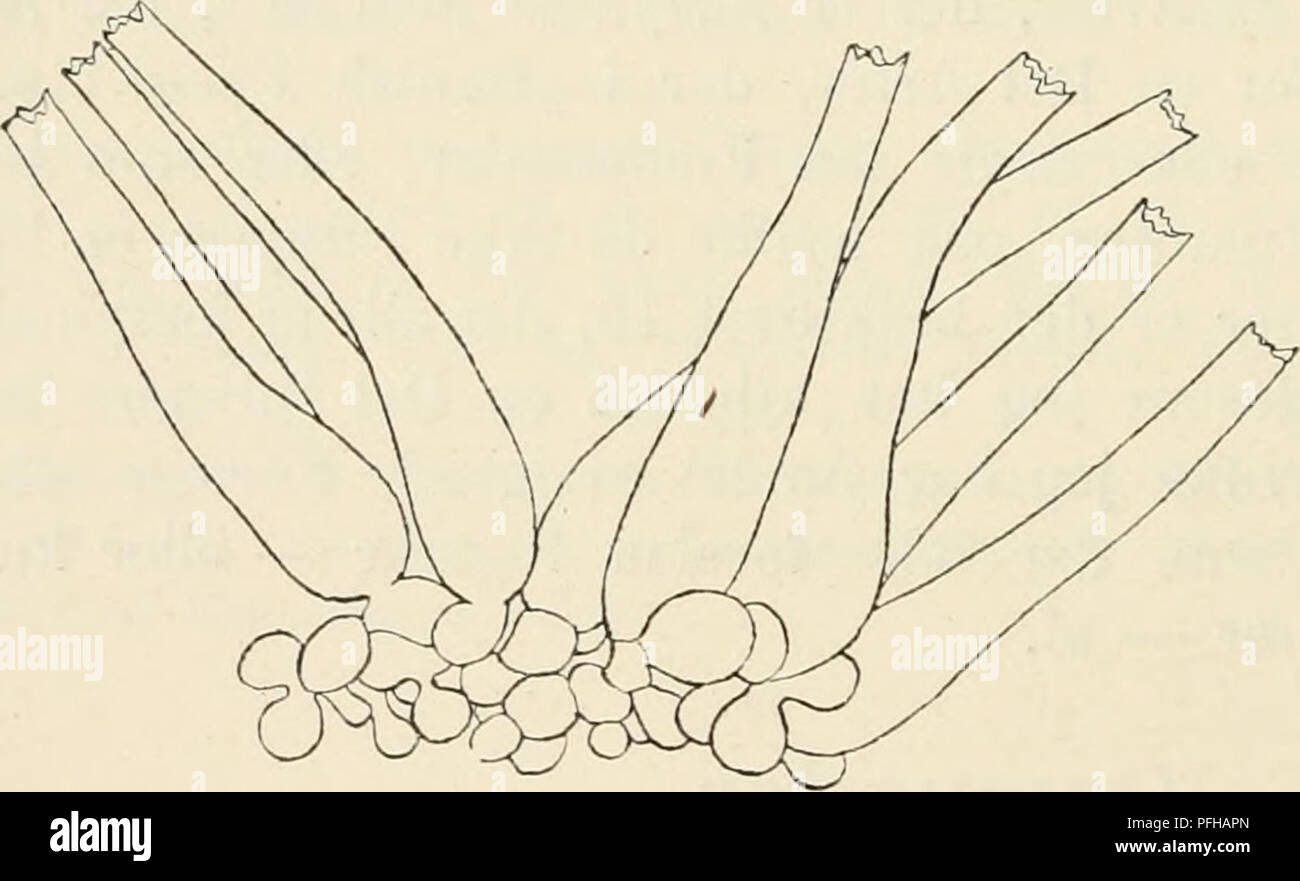 . Dansk botanisk arkiv. Plants; Plants -- Denmark. Dansk Botanisk Arkiv, Bd. 2. Nr. 5. Zygomycetes. Mucoraceae. *Mucor problems Schostakow. Paa Hestegødning. S. Gelsskov 1915. ?Mucor plasmaticus v. Tiegh. Paa Hestegødning. S. Kirkelte Hegn, Okt. 1915. *Absidia glauca Hagem. I Jorden. Møen: Borre 1913. Absidia orchidis (Vuill.) Hagem. I Jorden. Møen: Borre. Pilobolus Kleinii v. Tiegh. Paa Hestegødning. København. *Mortierellaceae. *Mortierella candelabrum v. Tiegh. et le Monn. Paa Polyporus adustus. S. Jægersborg Dyrehave. Paa raaddent Ved: S. Bavnsholt Hegn 1913. *3Iortierella polycephala Coem Stock Photohttps://www.alamy.com/image-license-details/?v=1https://www.alamy.com/dansk-botanisk-arkiv-plants-plants-denmark-dansk-botanisk-arkiv-bd-2-nr-5-zygomycetes-mucoraceae-mucor-problems-schostakow-paa-hestegdning-s-gelsskov-1915-mucor-plasmaticus-v-tiegh-paa-hestegdning-s-kirkelte-hegn-okt-1915-absidia-glauca-hagem-i-jorden-men-borre-1913-absidia-orchidis-vuill-hagem-i-jorden-men-borre-pilobolus-kleinii-v-tiegh-paa-hestegdning-kbenhavn-mortierellaceae-mortierella-candelabrum-v-tiegh-et-le-monn-paa-polyporus-adustus-s-jgersborg-dyrehave-paa-raaddent-ved-s-bavnsholt-hegn-1913-3iortierella-polycephala-coem-image216125917.html
. Dansk botanisk arkiv. Plants; Plants -- Denmark. Dansk Botanisk Arkiv, Bd. 2. Nr. 5. Zygomycetes. Mucoraceae. *Mucor problems Schostakow. Paa Hestegødning. S. Gelsskov 1915. ?Mucor plasmaticus v. Tiegh. Paa Hestegødning. S. Kirkelte Hegn, Okt. 1915. *Absidia glauca Hagem. I Jorden. Møen: Borre 1913. Absidia orchidis (Vuill.) Hagem. I Jorden. Møen: Borre. Pilobolus Kleinii v. Tiegh. Paa Hestegødning. København. *Mortierellaceae. *Mortierella candelabrum v. Tiegh. et le Monn. Paa Polyporus adustus. S. Jægersborg Dyrehave. Paa raaddent Ved: S. Bavnsholt Hegn 1913. *3Iortierella polycephala Coem Stock Photohttps://www.alamy.com/image-license-details/?v=1https://www.alamy.com/dansk-botanisk-arkiv-plants-plants-denmark-dansk-botanisk-arkiv-bd-2-nr-5-zygomycetes-mucoraceae-mucor-problems-schostakow-paa-hestegdning-s-gelsskov-1915-mucor-plasmaticus-v-tiegh-paa-hestegdning-s-kirkelte-hegn-okt-1915-absidia-glauca-hagem-i-jorden-men-borre-1913-absidia-orchidis-vuill-hagem-i-jorden-men-borre-pilobolus-kleinii-v-tiegh-paa-hestegdning-kbenhavn-mortierellaceae-mortierella-candelabrum-v-tiegh-et-le-monn-paa-polyporus-adustus-s-jgersborg-dyrehave-paa-raaddent-ved-s-bavnsholt-hegn-1913-3iortierella-polycephala-coem-image216125917.htmlRMPFHAPN–. Dansk botanisk arkiv. Plants; Plants -- Denmark. Dansk Botanisk Arkiv, Bd. 2. Nr. 5. Zygomycetes. Mucoraceae. *Mucor problems Schostakow. Paa Hestegødning. S. Gelsskov 1915. ?Mucor plasmaticus v. Tiegh. Paa Hestegødning. S. Kirkelte Hegn, Okt. 1915. *Absidia glauca Hagem. I Jorden. Møen: Borre 1913. Absidia orchidis (Vuill.) Hagem. I Jorden. Møen: Borre. Pilobolus Kleinii v. Tiegh. Paa Hestegødning. København. *Mortierellaceae. *Mortierella candelabrum v. Tiegh. et le Monn. Paa Polyporus adustus. S. Jægersborg Dyrehave. Paa raaddent Ved: S. Bavnsholt Hegn 1913. *3Iortierella polycephala Coem
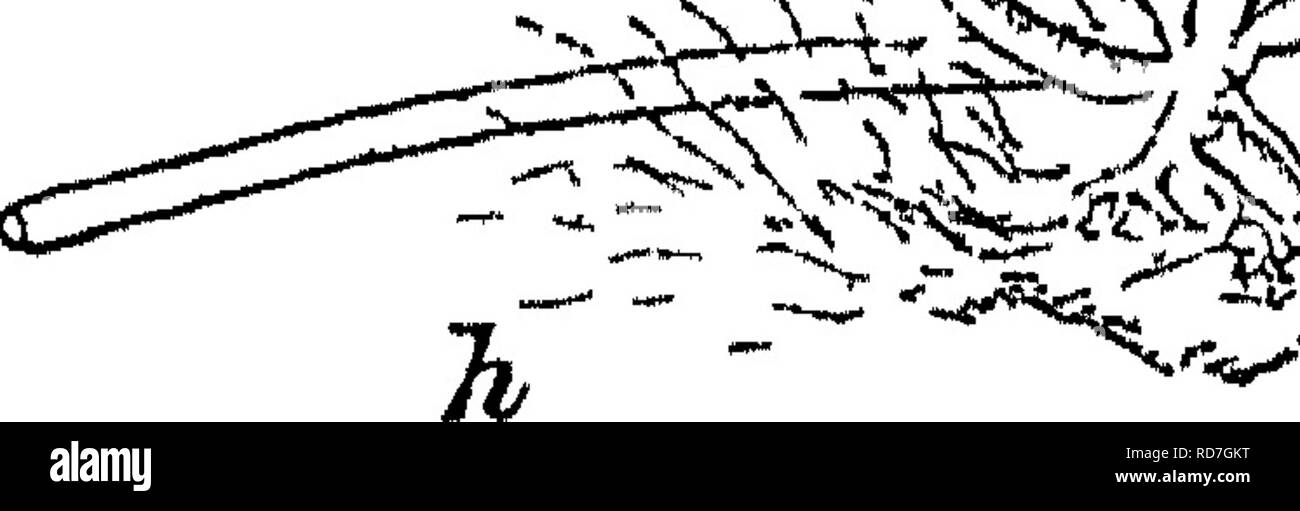 . Bacteriology and mycology of foods. Food. n. ..jff^fS. ^pj-w Fig. 47 —Rhizopus nigricans Ehrenberg (After Brefeld ) (a) is the extremity of a stolon, which has developed into the appressonum {h) This latter is the starting point of the sporangiophores (t) four of which are shown with the sporangia (&) unbroken, whilst the columella («) is all that remains of the fifth Magn 30 identification of molds. The mucoraceae do not possess these cross walls ordinarily. Fructib&cation. This takes place on the fertile hyphse which bear the fruiting bodies. Enormous numbers of spores are formed e Stock Photohttps://www.alamy.com/image-license-details/?v=1https://www.alamy.com/bacteriology-and-mycology-of-foods-food-n-jfffs-pj-w-fig-47-rhizopus-nigricans-ehrenberg-after-brefeld-a-is-the-extremity-of-a-stolon-which-has-developed-into-the-appressonum-h-this-latter-is-the-starting-point-of-the-sporangiophores-t-four-of-which-are-shown-with-the-sporangia-amp-unbroken-whilst-the-columella-is-all-that-remains-of-the-fifth-magn-30-identification-of-molds-the-mucoraceae-do-not-possess-these-cross-walls-ordinarily-fructibampcation-this-takes-place-on-the-fertile-hyphse-which-bear-the-fruiting-bodies-enormous-numbers-of-spores-are-formed-e-image231892076.html
. Bacteriology and mycology of foods. Food. n. ..jff^fS. ^pj-w Fig. 47 —Rhizopus nigricans Ehrenberg (After Brefeld ) (a) is the extremity of a stolon, which has developed into the appressonum {h) This latter is the starting point of the sporangiophores (t) four of which are shown with the sporangia (&) unbroken, whilst the columella («) is all that remains of the fifth Magn 30 identification of molds. The mucoraceae do not possess these cross walls ordinarily. Fructib&cation. This takes place on the fertile hyphse which bear the fruiting bodies. Enormous numbers of spores are formed e Stock Photohttps://www.alamy.com/image-license-details/?v=1https://www.alamy.com/bacteriology-and-mycology-of-foods-food-n-jfffs-pj-w-fig-47-rhizopus-nigricans-ehrenberg-after-brefeld-a-is-the-extremity-of-a-stolon-which-has-developed-into-the-appressonum-h-this-latter-is-the-starting-point-of-the-sporangiophores-t-four-of-which-are-shown-with-the-sporangia-amp-unbroken-whilst-the-columella-is-all-that-remains-of-the-fifth-magn-30-identification-of-molds-the-mucoraceae-do-not-possess-these-cross-walls-ordinarily-fructibampcation-this-takes-place-on-the-fertile-hyphse-which-bear-the-fruiting-bodies-enormous-numbers-of-spores-are-formed-e-image231892076.htmlRMRD7GKT–. Bacteriology and mycology of foods. Food. n. ..jff^fS. ^pj-w Fig. 47 —Rhizopus nigricans Ehrenberg (After Brefeld ) (a) is the extremity of a stolon, which has developed into the appressonum {h) This latter is the starting point of the sporangiophores (t) four of which are shown with the sporangia (&) unbroken, whilst the columella («) is all that remains of the fifth Magn 30 identification of molds. The mucoraceae do not possess these cross walls ordinarily. Fructib&cation. This takes place on the fertile hyphse which bear the fruiting bodies. Enormous numbers of spores are formed e
 Rhizopus arrhizus Stock Photohttps://www.alamy.com/image-license-details/?v=1https://www.alamy.com/stock-photo-rhizopus-arrhizus-134944677.html
Rhizopus arrhizus Stock Photohttps://www.alamy.com/image-license-details/?v=1https://www.alamy.com/stock-photo-rhizopus-arrhizus-134944677.htmlRMHRF78N–Rhizopus arrhizus
 Black bread mold (Rhizopus stolonifer or Rhizopus nigricans) colonizing bread. Stock Photohttps://www.alamy.com/image-license-details/?v=1https://www.alamy.com/black-bread-mold-rhizopus-stolonifer-or-rhizopus-nigricans-colonizing-bread-image575840087.html
Black bread mold (Rhizopus stolonifer or Rhizopus nigricans) colonizing bread. Stock Photohttps://www.alamy.com/image-license-details/?v=1https://www.alamy.com/black-bread-mold-rhizopus-stolonifer-or-rhizopus-nigricans-colonizing-bread-image575840087.htmlRF2TCRNWB–Black bread mold (Rhizopus stolonifer or Rhizopus nigricans) colonizing bread.
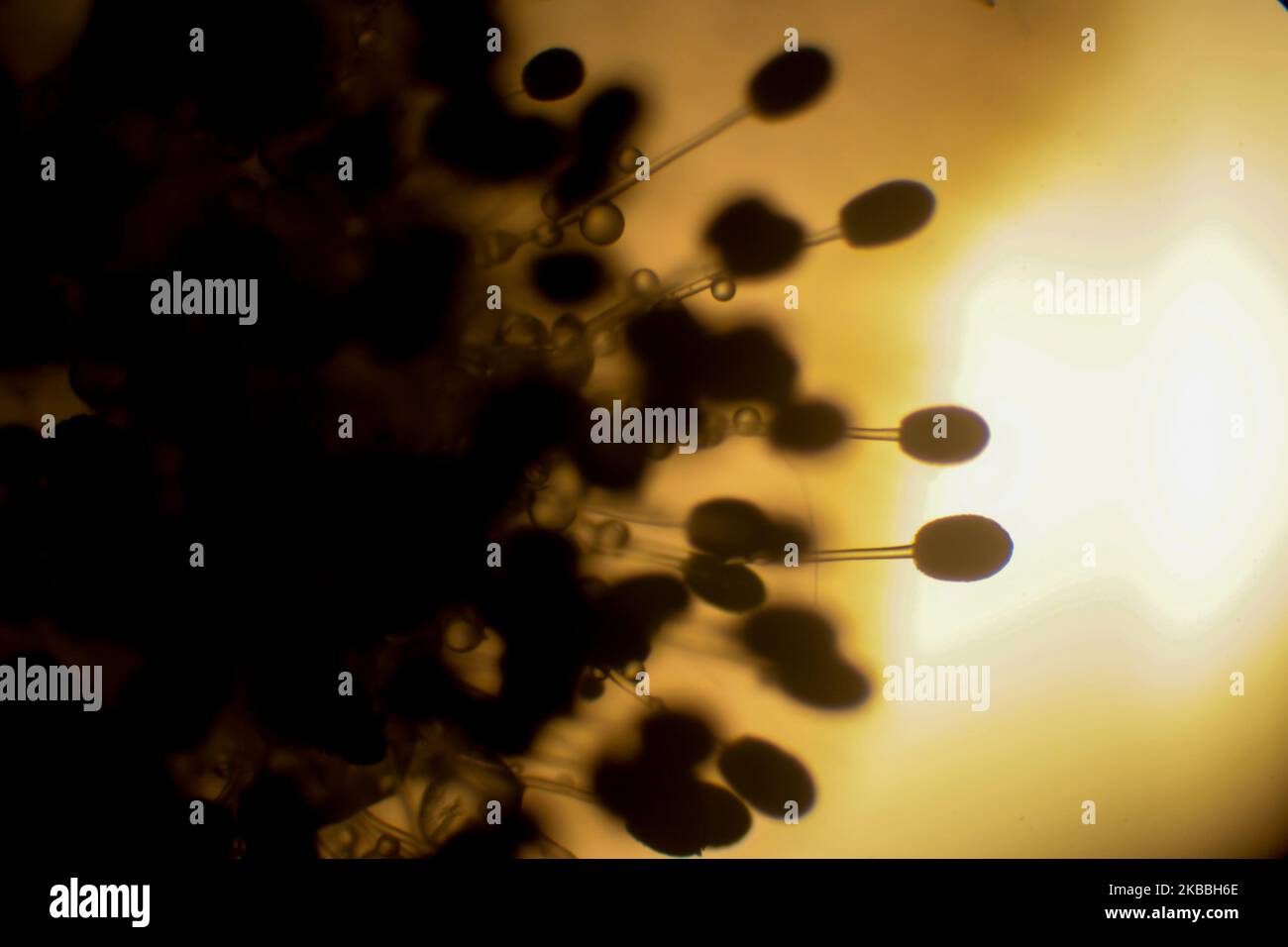 Rhizopus fungi specimen as seen through a microscope Stock Photohttps://www.alamy.com/image-license-details/?v=1https://www.alamy.com/rhizopus-fungi-specimen-as-seen-through-a-microscope-image488906502.html
Rhizopus fungi specimen as seen through a microscope Stock Photohttps://www.alamy.com/image-license-details/?v=1https://www.alamy.com/rhizopus-fungi-specimen-as-seen-through-a-microscope-image488906502.htmlRF2KBBH6E–Rhizopus fungi specimen as seen through a microscope
 Prof. Dr. Thomé's Flora von Deutschland, Österreich und der Schweiz, in Wort und Bild, für Schule und Haus, mit Tafeln von Walter Müller. Gera-Untermhaus, F.E. Khler, 1886-1934. austria botany cryptogamia cryptogams floras germany plants switzerland fungi, The illustration features a detailed botanical study of various forms of fungi, specifically within the Mucoraceae family. It showcases multiple structures, including the spherical fruiting bodies, often referred to as sporangia, supported by slender stalks. The lower part highlights the filamentous hyphal network from which the fruiting Stock Photohttps://www.alamy.com/image-license-details/?v=1https://www.alamy.com/prof-dr-thomes-flora-von-deutschland-osterreich-und-der-schweiz-in-wort-und-bild-fur-schule-und-haus-mit-tafeln-von-walter-muller-gera-untermhaus-fe-khler-1886-1934-austria-botany-cryptogamia-cryptogams-floras-germany-plants-switzerland-fungi-the-illustration-features-a-detailed-botanical-study-of-various-forms-of-fungi-specifically-within-the-mucoraceae-family-it-showcases-multiple-structures-including-the-spherical-fruiting-bodies-often-referred-to-as-sporangia-supported-by-slender-stalks-the-lower-part-highlights-the-filamentous-hyphal-network-from-which-the-fruiting-image636084864.html
Prof. Dr. Thomé's Flora von Deutschland, Österreich und der Schweiz, in Wort und Bild, für Schule und Haus, mit Tafeln von Walter Müller. Gera-Untermhaus, F.E. Khler, 1886-1934. austria botany cryptogamia cryptogams floras germany plants switzerland fungi, The illustration features a detailed botanical study of various forms of fungi, specifically within the Mucoraceae family. It showcases multiple structures, including the spherical fruiting bodies, often referred to as sporangia, supported by slender stalks. The lower part highlights the filamentous hyphal network from which the fruiting Stock Photohttps://www.alamy.com/image-license-details/?v=1https://www.alamy.com/prof-dr-thomes-flora-von-deutschland-osterreich-und-der-schweiz-in-wort-und-bild-fur-schule-und-haus-mit-tafeln-von-walter-muller-gera-untermhaus-fe-khler-1886-1934-austria-botany-cryptogamia-cryptogams-floras-germany-plants-switzerland-fungi-the-illustration-features-a-detailed-botanical-study-of-various-forms-of-fungi-specifically-within-the-mucoraceae-family-it-showcases-multiple-structures-including-the-spherical-fruiting-bodies-often-referred-to-as-sporangia-supported-by-slender-stalks-the-lower-part-highlights-the-filamentous-hyphal-network-from-which-the-fruiting-image636084864.htmlRM2YXT4MG–Prof. Dr. Thomé's Flora von Deutschland, Österreich und der Schweiz, in Wort und Bild, für Schule und Haus, mit Tafeln von Walter Müller. Gera-Untermhaus, F.E. Khler, 1886-1934. austria botany cryptogamia cryptogams floras germany plants switzerland fungi, The illustration features a detailed botanical study of various forms of fungi, specifically within the Mucoraceae family. It showcases multiple structures, including the spherical fruiting bodies, often referred to as sporangia, supported by slender stalks. The lower part highlights the filamentous hyphal network from which the fruiting
 ZYGOMYCETE Stock Photohttps://www.alamy.com/image-license-details/?v=1https://www.alamy.com/stock-photo-zygomycete-53857888.html
ZYGOMYCETE Stock Photohttps://www.alamy.com/image-license-details/?v=1https://www.alamy.com/stock-photo-zygomycete-53857888.htmlRMD3HC80–ZYGOMYCETE
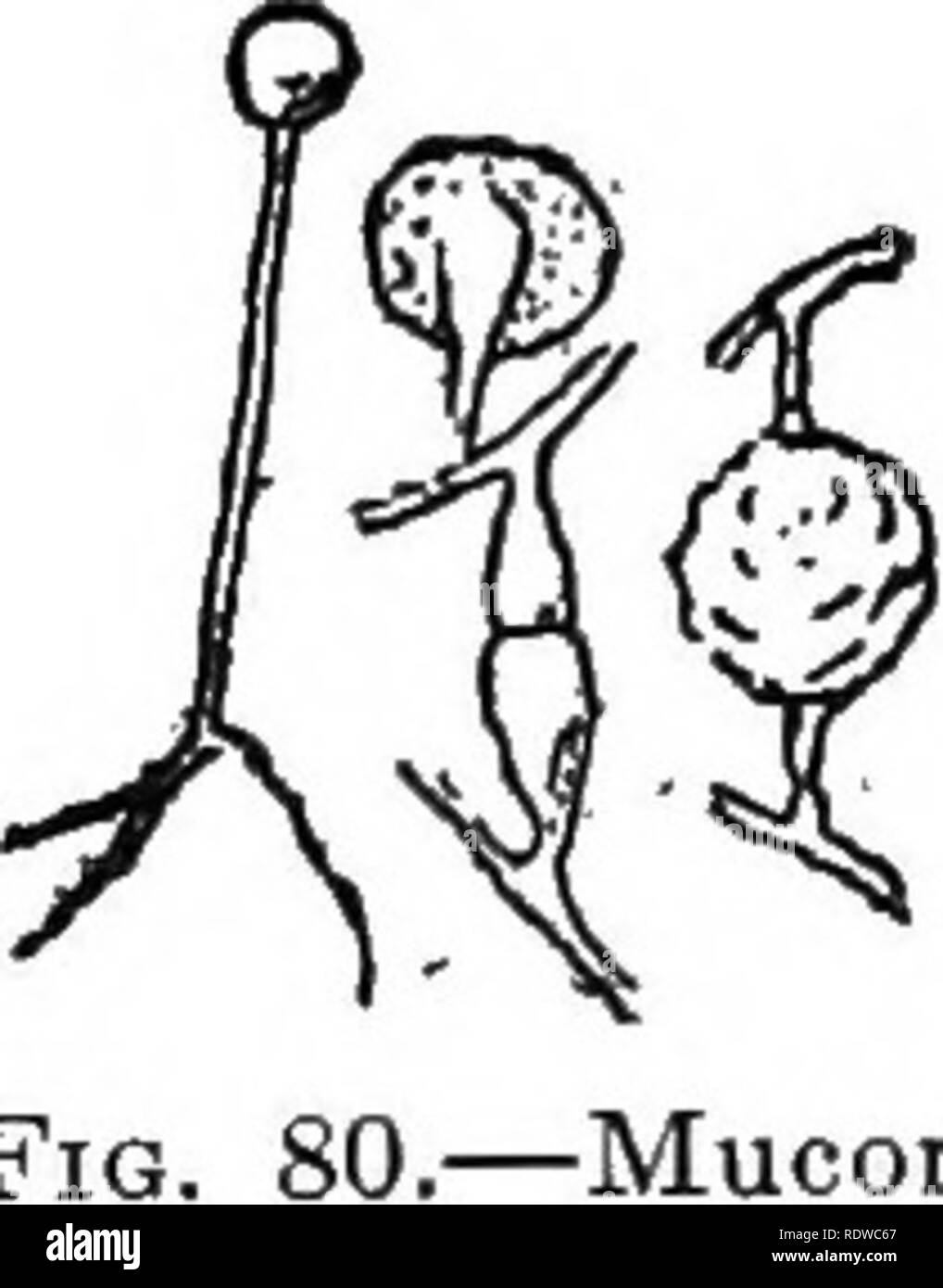 . The essentials of botany. Botany. BLACK MOLDS 189 and thereupon the egg secretes a thick double wall, and becomes a resting spore. 280. The resting spores remain in the tissues of the host until the latter decay, which is generally in the spring. Germination then takes place, in some species by the production of a tube (either germ-tube, or co- nidiophore), in others by the division of the protoplasm into zoospores whose subsequent development is like that described above in case of the conidia. 281. The Black Molds (Mucoraceae) are saprophytic and sometimes parasitic plants; they are compos Stock Photohttps://www.alamy.com/image-license-details/?v=1https://www.alamy.com/the-essentials-of-botany-botany-black-molds-189-and-thereupon-the-egg-secretes-a-thick-double-wall-and-becomes-a-resting-spore-280-the-resting-spores-remain-in-the-tissues-of-the-host-until-the-latter-decay-which-is-generally-in-the-spring-germination-then-takes-place-in-some-species-by-the-production-of-a-tube-either-germ-tube-or-co-nidiophore-in-others-by-the-division-of-the-protoplasm-into-zoospores-whose-subsequent-development-is-like-that-described-above-in-case-of-the-conidia-281-the-black-molds-mucoraceae-are-saprophytic-and-sometimes-parasitic-plants-they-are-compos-image232283695.html
. The essentials of botany. Botany. BLACK MOLDS 189 and thereupon the egg secretes a thick double wall, and becomes a resting spore. 280. The resting spores remain in the tissues of the host until the latter decay, which is generally in the spring. Germination then takes place, in some species by the production of a tube (either germ-tube, or co- nidiophore), in others by the division of the protoplasm into zoospores whose subsequent development is like that described above in case of the conidia. 281. The Black Molds (Mucoraceae) are saprophytic and sometimes parasitic plants; they are compos Stock Photohttps://www.alamy.com/image-license-details/?v=1https://www.alamy.com/the-essentials-of-botany-botany-black-molds-189-and-thereupon-the-egg-secretes-a-thick-double-wall-and-becomes-a-resting-spore-280-the-resting-spores-remain-in-the-tissues-of-the-host-until-the-latter-decay-which-is-generally-in-the-spring-germination-then-takes-place-in-some-species-by-the-production-of-a-tube-either-germ-tube-or-co-nidiophore-in-others-by-the-division-of-the-protoplasm-into-zoospores-whose-subsequent-development-is-like-that-described-above-in-case-of-the-conidia-281-the-black-molds-mucoraceae-are-saprophytic-and-sometimes-parasitic-plants-they-are-compos-image232283695.htmlRMRDWC67–. The essentials of botany. Botany. BLACK MOLDS 189 and thereupon the egg secretes a thick double wall, and becomes a resting spore. 280. The resting spores remain in the tissues of the host until the latter decay, which is generally in the spring. Germination then takes place, in some species by the production of a tube (either germ-tube, or co- nidiophore), in others by the division of the protoplasm into zoospores whose subsequent development is like that described above in case of the conidia. 281. The Black Molds (Mucoraceae) are saprophytic and sometimes parasitic plants; they are compos
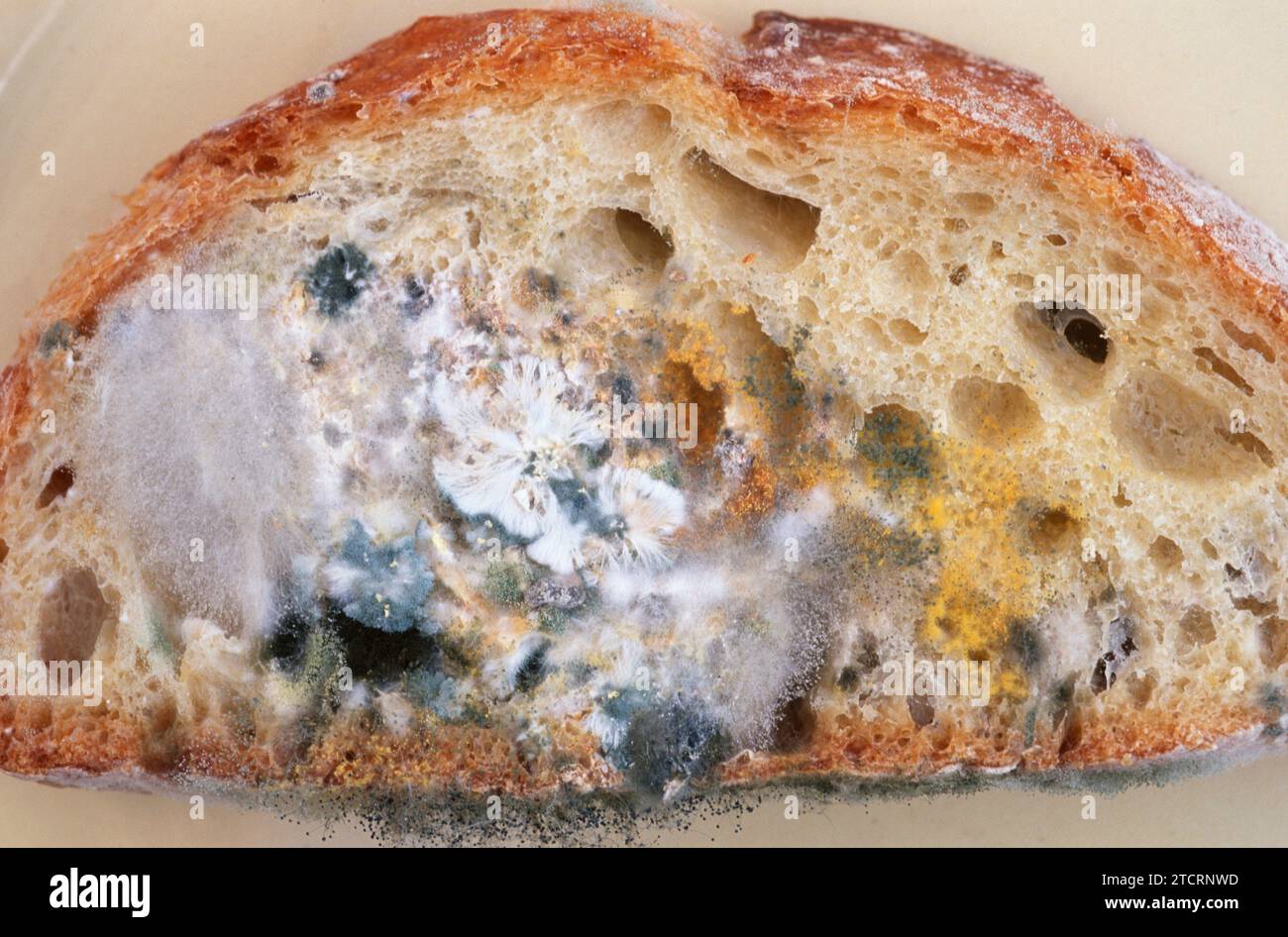 Rhizopus stolonifer or Rhizopus nigricans colonizing bread. Stock Photohttps://www.alamy.com/image-license-details/?v=1https://www.alamy.com/rhizopus-stolonifer-or-rhizopus-nigricans-colonizing-bread-image575840089.html
Rhizopus stolonifer or Rhizopus nigricans colonizing bread. Stock Photohttps://www.alamy.com/image-license-details/?v=1https://www.alamy.com/rhizopus-stolonifer-or-rhizopus-nigricans-colonizing-bread-image575840089.htmlRF2TCRNWD–Rhizopus stolonifer or Rhizopus nigricans colonizing bread.
 Prof. Dr. Thomé's Flora von Deutschland, Österreich und der Schweiz, in Wort und Bild, für Schule und Haus, mit Tafeln von Walter Müller. Gera-Untermhaus, F.E. Khler, 1886-1934. Austria, Botany, Cryptogamia, Cryptogams, Floras, Germany, Plants, Switzerland, Fungi, This illustration features various stages of a plant from the Mucoraceae family. The top section showcases a branched structure with small round or oval-shaped sporangia clustered together, indicating reproductive elements. Below, several detailed views highlight the morphology of sporangia, including both mature and developing f Stock Photohttps://www.alamy.com/image-license-details/?v=1https://www.alamy.com/prof-dr-thomes-flora-von-deutschland-osterreich-und-der-schweiz-in-wort-und-bild-fur-schule-und-haus-mit-tafeln-von-walter-muller-gera-untermhaus-fe-khler-1886-1934-austria-botany-cryptogamia-cryptogams-floras-germany-plants-switzerland-fungi-this-illustration-features-various-stages-of-a-plant-from-the-mucoraceae-family-the-top-section-showcases-a-branched-structure-with-small-round-or-oval-shaped-sporangia-clustered-together-indicating-reproductive-elements-below-several-detailed-views-highlight-the-morphology-of-sporangia-including-both-mature-and-developing-f-image636087529.html
Prof. Dr. Thomé's Flora von Deutschland, Österreich und der Schweiz, in Wort und Bild, für Schule und Haus, mit Tafeln von Walter Müller. Gera-Untermhaus, F.E. Khler, 1886-1934. Austria, Botany, Cryptogamia, Cryptogams, Floras, Germany, Plants, Switzerland, Fungi, This illustration features various stages of a plant from the Mucoraceae family. The top section showcases a branched structure with small round or oval-shaped sporangia clustered together, indicating reproductive elements. Below, several detailed views highlight the morphology of sporangia, including both mature and developing f Stock Photohttps://www.alamy.com/image-license-details/?v=1https://www.alamy.com/prof-dr-thomes-flora-von-deutschland-osterreich-und-der-schweiz-in-wort-und-bild-fur-schule-und-haus-mit-tafeln-von-walter-muller-gera-untermhaus-fe-khler-1886-1934-austria-botany-cryptogamia-cryptogams-floras-germany-plants-switzerland-fungi-this-illustration-features-various-stages-of-a-plant-from-the-mucoraceae-family-the-top-section-showcases-a-branched-structure-with-small-round-or-oval-shaped-sporangia-clustered-together-indicating-reproductive-elements-below-several-detailed-views-highlight-the-morphology-of-sporangia-including-both-mature-and-developing-f-image636087529.htmlRM2YXT83N–Prof. Dr. Thomé's Flora von Deutschland, Österreich und der Schweiz, in Wort und Bild, für Schule und Haus, mit Tafeln von Walter Müller. Gera-Untermhaus, F.E. Khler, 1886-1934. Austria, Botany, Cryptogamia, Cryptogams, Floras, Germany, Plants, Switzerland, Fungi, This illustration features various stages of a plant from the Mucoraceae family. The top section showcases a branched structure with small round or oval-shaped sporangia clustered together, indicating reproductive elements. Below, several detailed views highlight the morphology of sporangia, including both mature and developing f
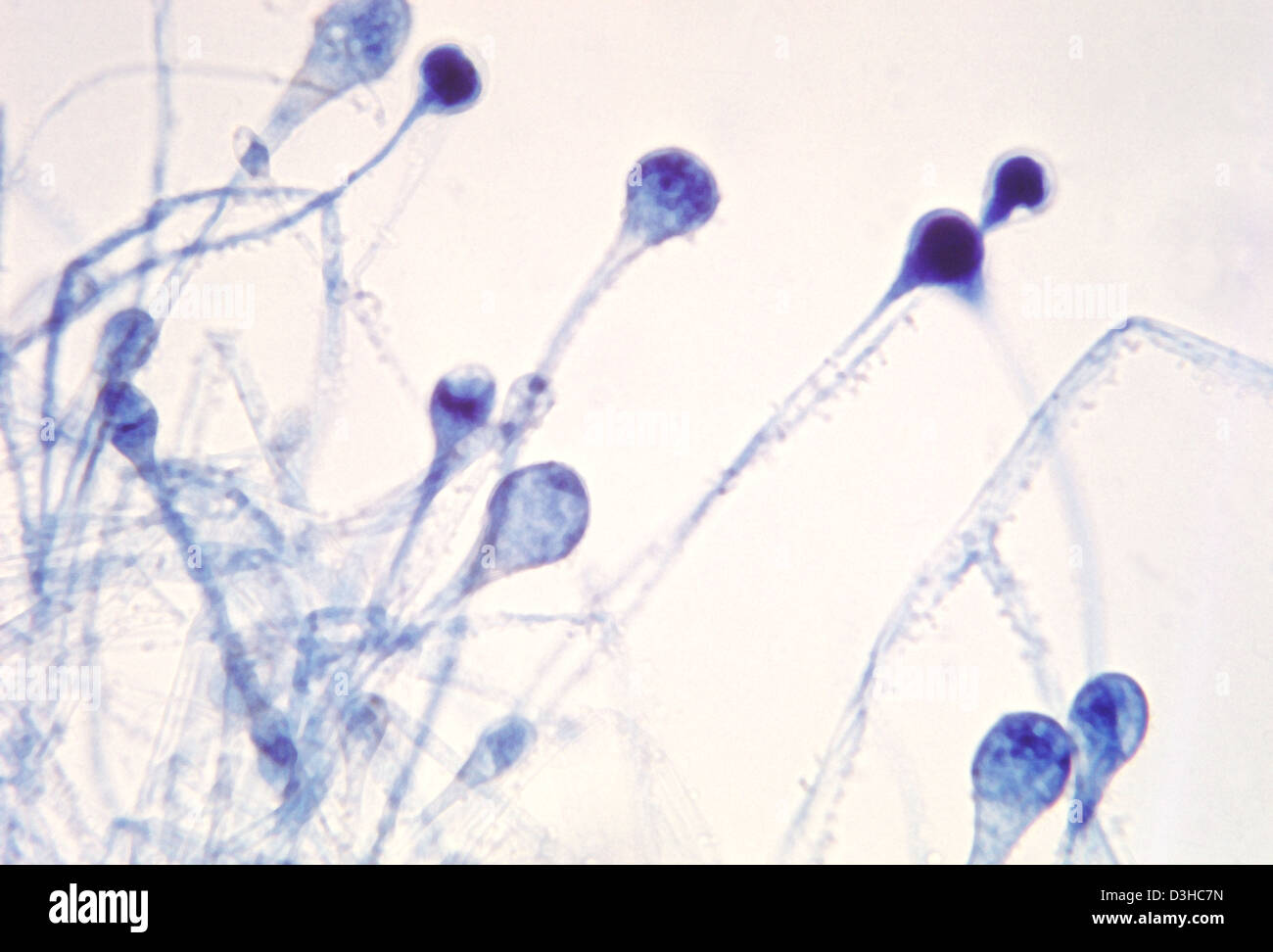 ZYGOMYCETE Stock Photohttps://www.alamy.com/image-license-details/?v=1https://www.alamy.com/stock-photo-zygomycete-53857881.html
ZYGOMYCETE Stock Photohttps://www.alamy.com/image-license-details/?v=1https://www.alamy.com/stock-photo-zygomycete-53857881.htmlRMD3HC7N–ZYGOMYCETE
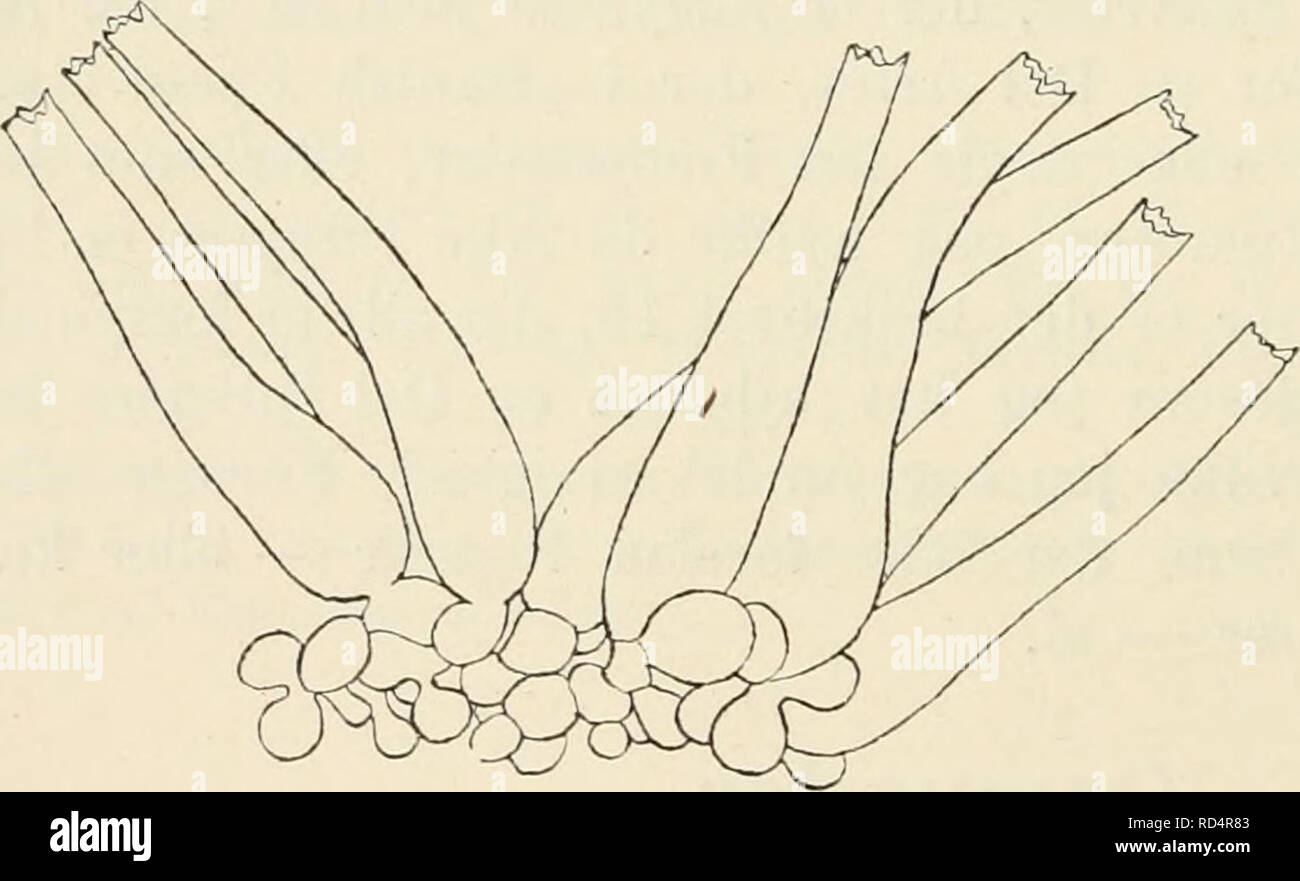 . Dansk botanisk arkiv. Plants; Plants -- Denmark. Dansk Botanisk Arkiv, Bd. 2. Nr. 5. Zygomycetes. Mucoraceae. *Mucor problems Schostakow. Paa Hestegødning. S. Gelsskov 1915. ?Mucor plasmaticus v. Tiegh. Paa Hestegødning. S. Kirkelte Hegn, Okt. 1915. *Absidia glauca Hagem. I Jorden. Møen: Borre 1913. Absidia orchidis (Vuill.) Hagem. I Jorden. Møen: Borre. Pilobolus Kleinii v. Tiegh. Paa Hestegødning. København. *Mortierellaceae. *Mortierella candelabrum v. Tiegh. et le Monn. Paa Polyporus adustus. S. Jægersborg Dyrehave. Paa raaddent Ved: S. Bavnsholt Hegn 1913. *3Iortierella polycephala Coem Stock Photohttps://www.alamy.com/image-license-details/?v=1https://www.alamy.com/dansk-botanisk-arkiv-plants-plants-denmark-dansk-botanisk-arkiv-bd-2-nr-5-zygomycetes-mucoraceae-mucor-problems-schostakow-paa-hestegdning-s-gelsskov-1915-mucor-plasmaticus-v-tiegh-paa-hestegdning-s-kirkelte-hegn-okt-1915-absidia-glauca-hagem-i-jorden-men-borre-1913-absidia-orchidis-vuill-hagem-i-jorden-men-borre-pilobolus-kleinii-v-tiegh-paa-hestegdning-kbenhavn-mortierellaceae-mortierella-candelabrum-v-tiegh-et-le-monn-paa-polyporus-adustus-s-jgersborg-dyrehave-paa-raaddent-ved-s-bavnsholt-hegn-1913-3iortierella-polycephala-coem-image231831379.html
. Dansk botanisk arkiv. Plants; Plants -- Denmark. Dansk Botanisk Arkiv, Bd. 2. Nr. 5. Zygomycetes. Mucoraceae. *Mucor problems Schostakow. Paa Hestegødning. S. Gelsskov 1915. ?Mucor plasmaticus v. Tiegh. Paa Hestegødning. S. Kirkelte Hegn, Okt. 1915. *Absidia glauca Hagem. I Jorden. Møen: Borre 1913. Absidia orchidis (Vuill.) Hagem. I Jorden. Møen: Borre. Pilobolus Kleinii v. Tiegh. Paa Hestegødning. København. *Mortierellaceae. *Mortierella candelabrum v. Tiegh. et le Monn. Paa Polyporus adustus. S. Jægersborg Dyrehave. Paa raaddent Ved: S. Bavnsholt Hegn 1913. *3Iortierella polycephala Coem Stock Photohttps://www.alamy.com/image-license-details/?v=1https://www.alamy.com/dansk-botanisk-arkiv-plants-plants-denmark-dansk-botanisk-arkiv-bd-2-nr-5-zygomycetes-mucoraceae-mucor-problems-schostakow-paa-hestegdning-s-gelsskov-1915-mucor-plasmaticus-v-tiegh-paa-hestegdning-s-kirkelte-hegn-okt-1915-absidia-glauca-hagem-i-jorden-men-borre-1913-absidia-orchidis-vuill-hagem-i-jorden-men-borre-pilobolus-kleinii-v-tiegh-paa-hestegdning-kbenhavn-mortierellaceae-mortierella-candelabrum-v-tiegh-et-le-monn-paa-polyporus-adustus-s-jgersborg-dyrehave-paa-raaddent-ved-s-bavnsholt-hegn-1913-3iortierella-polycephala-coem-image231831379.htmlRMRD4R83–. Dansk botanisk arkiv. Plants; Plants -- Denmark. Dansk Botanisk Arkiv, Bd. 2. Nr. 5. Zygomycetes. Mucoraceae. *Mucor problems Schostakow. Paa Hestegødning. S. Gelsskov 1915. ?Mucor plasmaticus v. Tiegh. Paa Hestegødning. S. Kirkelte Hegn, Okt. 1915. *Absidia glauca Hagem. I Jorden. Møen: Borre 1913. Absidia orchidis (Vuill.) Hagem. I Jorden. Møen: Borre. Pilobolus Kleinii v. Tiegh. Paa Hestegødning. København. *Mortierellaceae. *Mortierella candelabrum v. Tiegh. et le Monn. Paa Polyporus adustus. S. Jægersborg Dyrehave. Paa raaddent Ved: S. Bavnsholt Hegn 1913. *3Iortierella polycephala Coem
 Rhizopus stolonifer or Rhizopus nigricans colonizing a tomatoes. Stock Photohttps://www.alamy.com/image-license-details/?v=1https://www.alamy.com/rhizopus-stolonifer-or-rhizopus-nigricans-colonizing-a-tomatoes-image575840066.html
Rhizopus stolonifer or Rhizopus nigricans colonizing a tomatoes. Stock Photohttps://www.alamy.com/image-license-details/?v=1https://www.alamy.com/rhizopus-stolonifer-or-rhizopus-nigricans-colonizing-a-tomatoes-image575840066.htmlRF2TCRNTJ–Rhizopus stolonifer or Rhizopus nigricans colonizing a tomatoes.
 Prof. Dr. Thomé's Flora von Deutschland, Österreich und der Schweiz, in Wort und Bild, für Schule und Haus, mit Tafeln von Walter Müller. Gera-Untermhaus, F.E. Khler, 1886-1934, plants, germany, austria, switzerland, botany, floras, cryptogams, cryptogamia, fungi, This illustration features various botanical sketches of mucoraceae, a family of fungi. The top section illustrates a branching structure laden with spherical spores, showcasing the intricate details of the branching filaments. Below, smaller drawings depict individual spore structures and reproductive features, including bulbous Stock Photohttps://www.alamy.com/image-license-details/?v=1https://www.alamy.com/prof-dr-thomes-flora-von-deutschland-osterreich-und-der-schweiz-in-wort-und-bild-fur-schule-und-haus-mit-tafeln-von-walter-muller-gera-untermhaus-fe-khler-1886-1934-plants-germany-austria-switzerland-botany-floras-cryptogams-cryptogamia-fungi-this-illustration-features-various-botanical-sketches-of-mucoraceae-a-family-of-fungi-the-top-section-illustrates-a-branching-structure-laden-with-spherical-spores-showcasing-the-intricate-details-of-the-branching-filaments-below-smaller-drawings-depict-individual-spore-structures-and-reproductive-features-including-bulbous-image636085843.html
Prof. Dr. Thomé's Flora von Deutschland, Österreich und der Schweiz, in Wort und Bild, für Schule und Haus, mit Tafeln von Walter Müller. Gera-Untermhaus, F.E. Khler, 1886-1934, plants, germany, austria, switzerland, botany, floras, cryptogams, cryptogamia, fungi, This illustration features various botanical sketches of mucoraceae, a family of fungi. The top section illustrates a branching structure laden with spherical spores, showcasing the intricate details of the branching filaments. Below, smaller drawings depict individual spore structures and reproductive features, including bulbous Stock Photohttps://www.alamy.com/image-license-details/?v=1https://www.alamy.com/prof-dr-thomes-flora-von-deutschland-osterreich-und-der-schweiz-in-wort-und-bild-fur-schule-und-haus-mit-tafeln-von-walter-muller-gera-untermhaus-fe-khler-1886-1934-plants-germany-austria-switzerland-botany-floras-cryptogams-cryptogamia-fungi-this-illustration-features-various-botanical-sketches-of-mucoraceae-a-family-of-fungi-the-top-section-illustrates-a-branching-structure-laden-with-spherical-spores-showcasing-the-intricate-details-of-the-branching-filaments-below-smaller-drawings-depict-individual-spore-structures-and-reproductive-features-including-bulbous-image636085843.htmlRM2YXT5YF–Prof. Dr. Thomé's Flora von Deutschland, Österreich und der Schweiz, in Wort und Bild, für Schule und Haus, mit Tafeln von Walter Müller. Gera-Untermhaus, F.E. Khler, 1886-1934, plants, germany, austria, switzerland, botany, floras, cryptogams, cryptogamia, fungi, This illustration features various botanical sketches of mucoraceae, a family of fungi. The top section illustrates a branching structure laden with spherical spores, showcasing the intricate details of the branching filaments. Below, smaller drawings depict individual spore structures and reproductive features, including bulbous
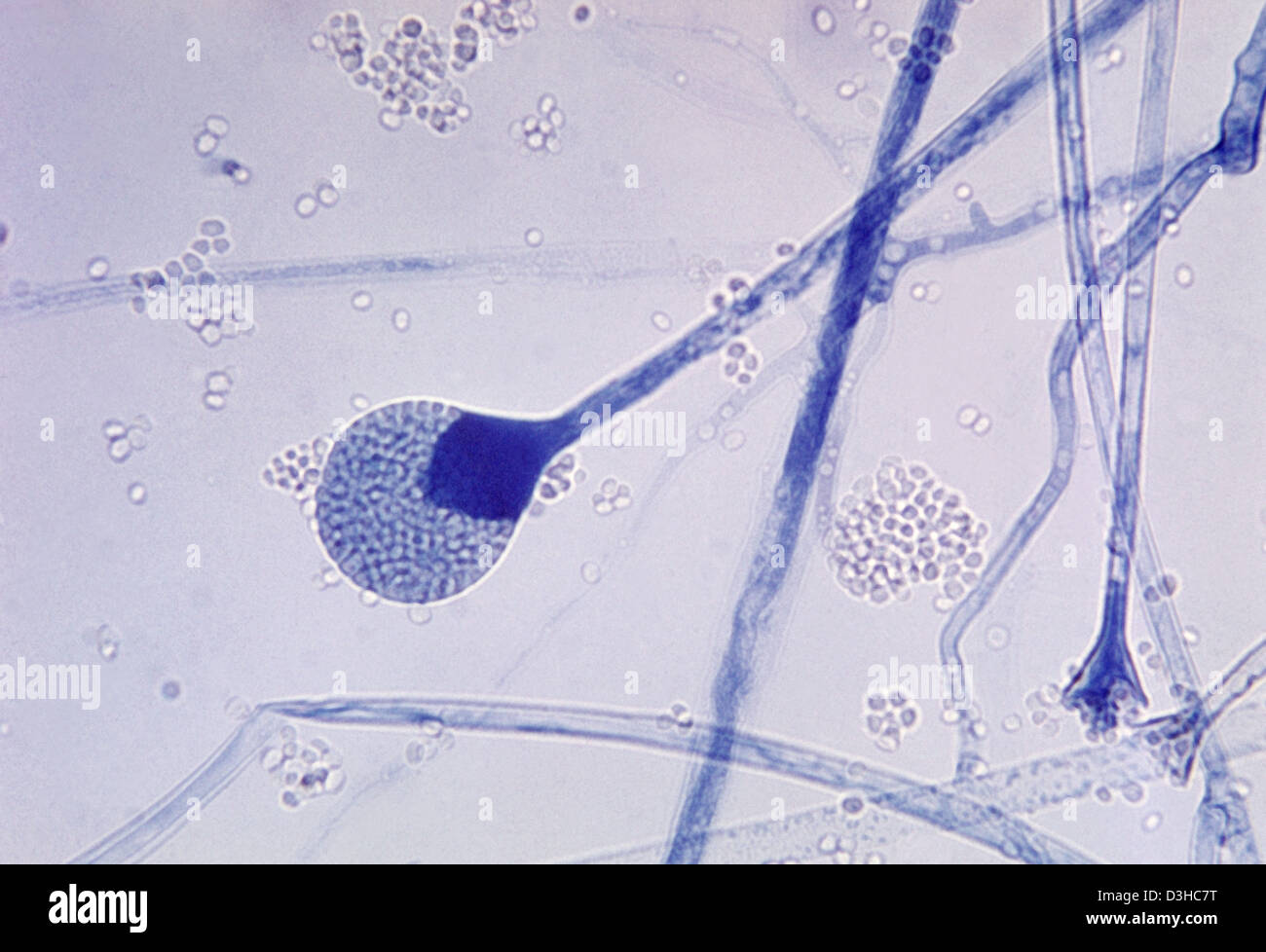 ZYGOMYCETE Stock Photohttps://www.alamy.com/image-license-details/?v=1https://www.alamy.com/stock-photo-zygomycete-53857884.html
ZYGOMYCETE Stock Photohttps://www.alamy.com/image-license-details/?v=1https://www.alamy.com/stock-photo-zygomycete-53857884.htmlRMD3HC7T–ZYGOMYCETE
 Rhizopus stolonifer or Rhizopus nigricans colonizing a tomatoes. Stock Photohttps://www.alamy.com/image-license-details/?v=1https://www.alamy.com/rhizopus-stolonifer-or-rhizopus-nigricans-colonizing-a-tomatoes-image575840065.html
Rhizopus stolonifer or Rhizopus nigricans colonizing a tomatoes. Stock Photohttps://www.alamy.com/image-license-details/?v=1https://www.alamy.com/rhizopus-stolonifer-or-rhizopus-nigricans-colonizing-a-tomatoes-image575840065.htmlRF2TCRNTH–Rhizopus stolonifer or Rhizopus nigricans colonizing a tomatoes.
 Prof. Dr. Thomé's Flora von Deutschland, Österreich und der Schweiz, in Wort und Bild, für Schule und Haus, mit Tafeln von Walter Müller. Gera-Untermhaus, F.E. Khler,1886-1934. Austria, Botany, Cryptogamia, Cryptogams, Floras, Germany, Plants, Switzerland, Fungi, The illustration features a delicate study of a plant from the family Mucoraceae, showcasing its intricate structures. At the center, a slender stem is adorned with a series of coiling tendrils, which provide a whimsical touch to the overall design. Various shapes are depicted, including spherical and elongated forms, likely repre Stock Photohttps://www.alamy.com/image-license-details/?v=1https://www.alamy.com/prof-dr-thomes-flora-von-deutschland-osterreich-und-der-schweiz-in-wort-und-bild-fur-schule-und-haus-mit-tafeln-von-walter-muller-gera-untermhaus-fe-khler1886-1934-austria-botany-cryptogamia-cryptogams-floras-germany-plants-switzerland-fungi-the-illustration-features-a-delicate-study-of-a-plant-from-the-family-mucoraceae-showcasing-its-intricate-structures-at-the-center-a-slender-stem-is-adorned-with-a-series-of-coiling-tendrils-which-provide-a-whimsical-touch-to-the-overall-design-various-shapes-are-depicted-including-spherical-and-elongated-forms-likely-repre-image636089282.html
Prof. Dr. Thomé's Flora von Deutschland, Österreich und der Schweiz, in Wort und Bild, für Schule und Haus, mit Tafeln von Walter Müller. Gera-Untermhaus, F.E. Khler,1886-1934. Austria, Botany, Cryptogamia, Cryptogams, Floras, Germany, Plants, Switzerland, Fungi, The illustration features a delicate study of a plant from the family Mucoraceae, showcasing its intricate structures. At the center, a slender stem is adorned with a series of coiling tendrils, which provide a whimsical touch to the overall design. Various shapes are depicted, including spherical and elongated forms, likely repre Stock Photohttps://www.alamy.com/image-license-details/?v=1https://www.alamy.com/prof-dr-thomes-flora-von-deutschland-osterreich-und-der-schweiz-in-wort-und-bild-fur-schule-und-haus-mit-tafeln-von-walter-muller-gera-untermhaus-fe-khler1886-1934-austria-botany-cryptogamia-cryptogams-floras-germany-plants-switzerland-fungi-the-illustration-features-a-delicate-study-of-a-plant-from-the-family-mucoraceae-showcasing-its-intricate-structures-at-the-center-a-slender-stem-is-adorned-with-a-series-of-coiling-tendrils-which-provide-a-whimsical-touch-to-the-overall-design-various-shapes-are-depicted-including-spherical-and-elongated-forms-likely-repre-image636089282.htmlRM2YXTAAA–Prof. Dr. Thomé's Flora von Deutschland, Österreich und der Schweiz, in Wort und Bild, für Schule und Haus, mit Tafeln von Walter Müller. Gera-Untermhaus, F.E. Khler,1886-1934. Austria, Botany, Cryptogamia, Cryptogams, Floras, Germany, Plants, Switzerland, Fungi, The illustration features a delicate study of a plant from the family Mucoraceae, showcasing its intricate structures. At the center, a slender stem is adorned with a series of coiling tendrils, which provide a whimsical touch to the overall design. Various shapes are depicted, including spherical and elongated forms, likely repre
 Rhizopus stolonifer or Rhizopus nigricans colonizing bread. Stock Photohttps://www.alamy.com/image-license-details/?v=1https://www.alamy.com/rhizopus-stolonifer-or-rhizopus-nigricans-colonizing-bread-image575840092.html
Rhizopus stolonifer or Rhizopus nigricans colonizing bread. Stock Photohttps://www.alamy.com/image-license-details/?v=1https://www.alamy.com/rhizopus-stolonifer-or-rhizopus-nigricans-colonizing-bread-image575840092.htmlRF2TCRNWG–Rhizopus stolonifer or Rhizopus nigricans colonizing bread.
 Prof. Dr. Thomé's Flora von Deutschland, Österreich und der Schweiz, in Wort und Bild, für Schule und Haus, mit Tafeln von Walter Müller. Gera-Untermhaus, F.E. Koehler, 1886-1934, Austria, botany, cryptogamia, cryptogams, floras, Germany, plants, Switzerland, fungi, The illustration depicts various forms and structures of Mucoraceae, a family of fungi. On the left side, a long filamentous structure is shown, extending from a bulbous base. This is accompanied by other branching forms demonstrating the diverse growth patterns of the fungi. Additional elements include spherical spore-like for Stock Photohttps://www.alamy.com/image-license-details/?v=1https://www.alamy.com/prof-dr-thomes-flora-von-deutschland-osterreich-und-der-schweiz-in-wort-und-bild-fur-schule-und-haus-mit-tafeln-von-walter-muller-gera-untermhaus-fe-koehler-1886-1934-austria-botany-cryptogamia-cryptogams-floras-germany-plants-switzerland-fungi-the-illustration-depicts-various-forms-and-structures-of-mucoraceae-a-family-of-fungi-on-the-left-side-a-long-filamentous-structure-is-shown-extending-from-a-bulbous-base-this-is-accompanied-by-other-branching-forms-demonstrating-the-diverse-growth-patterns-of-the-fungi-additional-elements-include-spherical-spore-like-for-image636086469.html
Prof. Dr. Thomé's Flora von Deutschland, Österreich und der Schweiz, in Wort und Bild, für Schule und Haus, mit Tafeln von Walter Müller. Gera-Untermhaus, F.E. Koehler, 1886-1934, Austria, botany, cryptogamia, cryptogams, floras, Germany, plants, Switzerland, fungi, The illustration depicts various forms and structures of Mucoraceae, a family of fungi. On the left side, a long filamentous structure is shown, extending from a bulbous base. This is accompanied by other branching forms demonstrating the diverse growth patterns of the fungi. Additional elements include spherical spore-like for Stock Photohttps://www.alamy.com/image-license-details/?v=1https://www.alamy.com/prof-dr-thomes-flora-von-deutschland-osterreich-und-der-schweiz-in-wort-und-bild-fur-schule-und-haus-mit-tafeln-von-walter-muller-gera-untermhaus-fe-koehler-1886-1934-austria-botany-cryptogamia-cryptogams-floras-germany-plants-switzerland-fungi-the-illustration-depicts-various-forms-and-structures-of-mucoraceae-a-family-of-fungi-on-the-left-side-a-long-filamentous-structure-is-shown-extending-from-a-bulbous-base-this-is-accompanied-by-other-branching-forms-demonstrating-the-diverse-growth-patterns-of-the-fungi-additional-elements-include-spherical-spore-like-for-image636086469.htmlRM2YXT6NW–Prof. Dr. Thomé's Flora von Deutschland, Österreich und der Schweiz, in Wort und Bild, für Schule und Haus, mit Tafeln von Walter Müller. Gera-Untermhaus, F.E. Koehler, 1886-1934, Austria, botany, cryptogamia, cryptogams, floras, Germany, plants, Switzerland, fungi, The illustration depicts various forms and structures of Mucoraceae, a family of fungi. On the left side, a long filamentous structure is shown, extending from a bulbous base. This is accompanied by other branching forms demonstrating the diverse growth patterns of the fungi. Additional elements include spherical spore-like for
 Prof. Dr. Thomé's Flora von Deutschland, Österreich und der Schweiz, in Wort und Bild, für Schule und Haus, mit Tafeln von Walter Müller. Gera-Untermhaus, F.E. Khler, 1886-1934. Austria, Botany, Cryptogamia, Cryptogams, Floras, Germany, Plants, Switzerland, Fungi, This illustration showcases various stages and structures of a fungal organism from the Mucoraceae family. Central to the composition is a tall, slender stalk topped with a spherical spore, labeled as number 1. Surrounding this central figure are additional structures: clustered spore formations at number 2, a branching hyphal st Stock Photohttps://www.alamy.com/image-license-details/?v=1https://www.alamy.com/prof-dr-thomes-flora-von-deutschland-osterreich-und-der-schweiz-in-wort-und-bild-fur-schule-und-haus-mit-tafeln-von-walter-muller-gera-untermhaus-fe-khler-1886-1934-austria-botany-cryptogamia-cryptogams-floras-germany-plants-switzerland-fungi-this-illustration-showcases-various-stages-and-structures-of-a-fungal-organism-from-the-mucoraceae-family-central-to-the-composition-is-a-tall-slender-stalk-topped-with-a-spherical-spore-labeled-as-number-1-surrounding-this-central-figure-are-additional-structures-clustered-spore-formations-at-number-2-a-branching-hyphal-st-image636087312.html
Prof. Dr. Thomé's Flora von Deutschland, Österreich und der Schweiz, in Wort und Bild, für Schule und Haus, mit Tafeln von Walter Müller. Gera-Untermhaus, F.E. Khler, 1886-1934. Austria, Botany, Cryptogamia, Cryptogams, Floras, Germany, Plants, Switzerland, Fungi, This illustration showcases various stages and structures of a fungal organism from the Mucoraceae family. Central to the composition is a tall, slender stalk topped with a spherical spore, labeled as number 1. Surrounding this central figure are additional structures: clustered spore formations at number 2, a branching hyphal st Stock Photohttps://www.alamy.com/image-license-details/?v=1https://www.alamy.com/prof-dr-thomes-flora-von-deutschland-osterreich-und-der-schweiz-in-wort-und-bild-fur-schule-und-haus-mit-tafeln-von-walter-muller-gera-untermhaus-fe-khler-1886-1934-austria-botany-cryptogamia-cryptogams-floras-germany-plants-switzerland-fungi-this-illustration-showcases-various-stages-and-structures-of-a-fungal-organism-from-the-mucoraceae-family-central-to-the-composition-is-a-tall-slender-stalk-topped-with-a-spherical-spore-labeled-as-number-1-surrounding-this-central-figure-are-additional-structures-clustered-spore-formations-at-number-2-a-branching-hyphal-st-image636087312.htmlRM2YXT7T0–Prof. Dr. Thomé's Flora von Deutschland, Österreich und der Schweiz, in Wort und Bild, für Schule und Haus, mit Tafeln von Walter Müller. Gera-Untermhaus, F.E. Khler, 1886-1934. Austria, Botany, Cryptogamia, Cryptogams, Floras, Germany, Plants, Switzerland, Fungi, This illustration showcases various stages and structures of a fungal organism from the Mucoraceae family. Central to the composition is a tall, slender stalk topped with a spherical spore, labeled as number 1. Surrounding this central figure are additional structures: clustered spore formations at number 2, a branching hyphal st